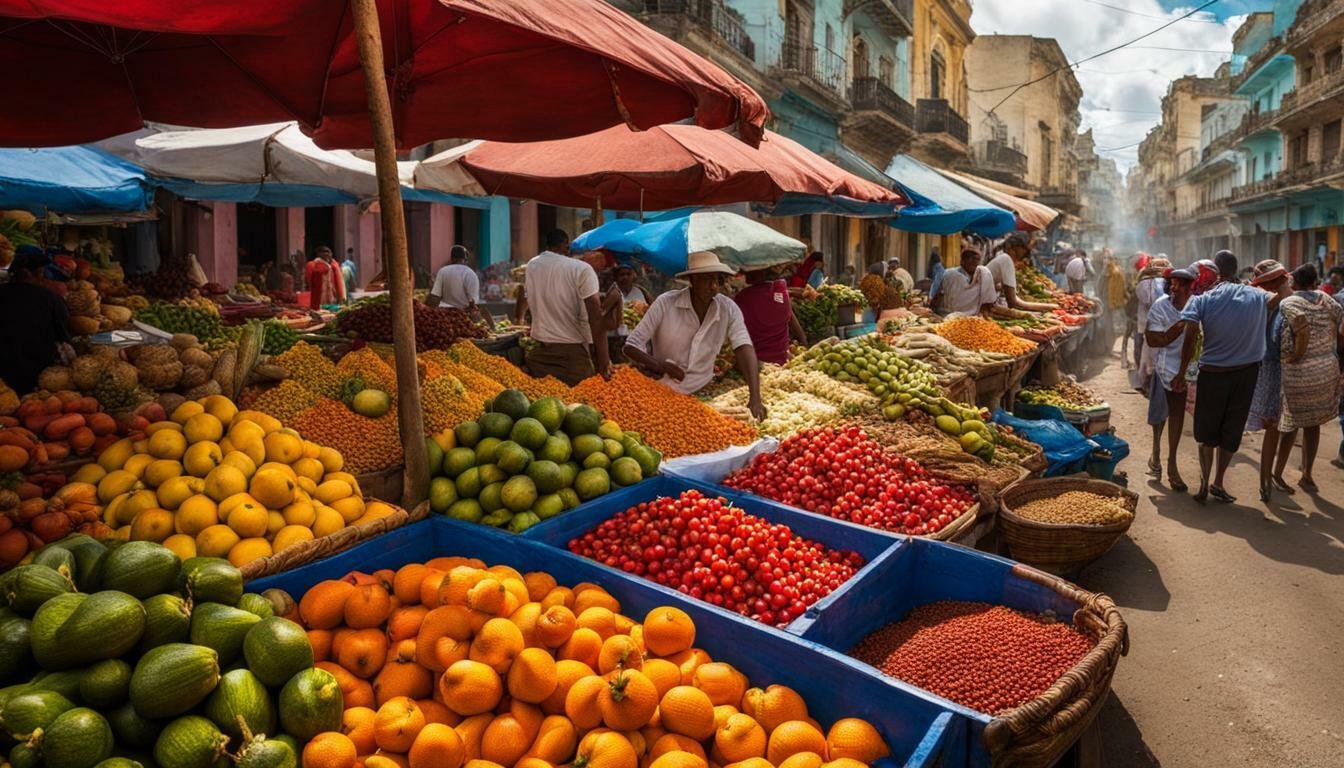Take Me to the Recipes
Imagine white sand beaches kissed by turquoise waters, salsa rhythms pulsating through vibrant streets, and the tantalizing aroma of garlic-infused ropa vieja wafting from bustling cafes. This is Cuba, an island nation where rich history, diverse landscapes, and a unique culinary tapestry captivate every traveler.
From the Spanish conquistadors who left their mark on colonial architecture to the revolutionary spirit that still echoes in the hearts of its people, Cuba’s past is as captivating as its present. Explore charming, cobbled streets in Havana, delve into the mysteries of Che Guevara’s legacy, and witness the resilience of a nation that has weathered countless storms.
But Cuba’s magic extends far beyond its history books. Lush rainforests teeming with exotic wildlife, dramatic mountain ranges offering breathtaking vistas, and pristine coral reefs teeming with colorful marine life paint a landscape of breathtaking natural beauty. Whether you’re an adrenaline-seeking adventurer or a nature enthusiast seeking serenity, Cuba’s diverse geography has something to offer everyone.
And then there’s the food! No exploration of Cuba is complete without indulging in its vibrant culinary scene. Freshly caught seafood, tropical fruits bursting with flavor, and slow-cooked stews seasoned with generations-old secrets offer a delicious journey through the island’s cultural heritage. Imagine savoring a mouthwatering Cubano sandwich, relishing the sweet creaminess of flan, or sipping a mojito under the warm Caribbean sun – culinary bliss awaits!
So, are you ready to embark on an unforgettable adventure? Join me as we delve into the captivating world of Cuba, where history whispers from every corner, nature unfolds in breathtaking beauty, and every bite is an explosion of flavor! Prepare to be enchanted, inspired, and tantalized – Cuba awaits!
Take Me to the Recipes
Key Takeaways
- Discover the National Dish for Cuba
- Explore the Rich Culinary Heritage of Cuba
- Learn about the History and Significance of Cuban Cuisine
- Unveil the Traditional Cuban Ingredients and Flavors
- Try the National Dish of Cuba: Ropa Vieja
Where is Cuba?

Cuba is the biggest island country in the Caribbean. It is situated south of Florida and the Bahamas, to the north of Jamaica, and to the northwest of Haiti. To its west is the Gulf of Mexico, to its south is the Caribbean Sea, and to its east is the Atlantic Ocean

Index to The Contents
- Take Me to the Recipes
- More Articles
- Interesting Facts About Cuba
- Cuba’s History and the Effect It Has Had on the Cuisine
- How Cuba’s Climate and Geography has Influenced Cuban Cuisine
- Understanding the Essence of Cuban Cuisine
- Cuban Culinary Traditions
- Exploring the Cuban Ingredients: The Flavors of Cuba
- What is Typical Cuban Food?
- What are 2 Cuban Foods Eaten in Florida?
- What is the Traditional Street Food of Cuba?
- How Healthy is Cuban Food?
- The National Dish of Cuba: Ropa Vieja
- Traditional Cuban Recipes you can try in your Kitchen
- Conclusion
- FAQ’s
You may also be interested in the Following Articles
- North and South American Cuisine – A Culinary Expedition
- Europe Cuisine: Savor the Continent’s Best Culinary Secrets!
- African Cuisine: Discover the Bold Flavors & Global Charm!
- Asian Cuisine Unlock its Secrets – Taste, Health & Global Influence!
Savor Iconic Cuban Food – Click on each tantalizing picture to open up the Recipe
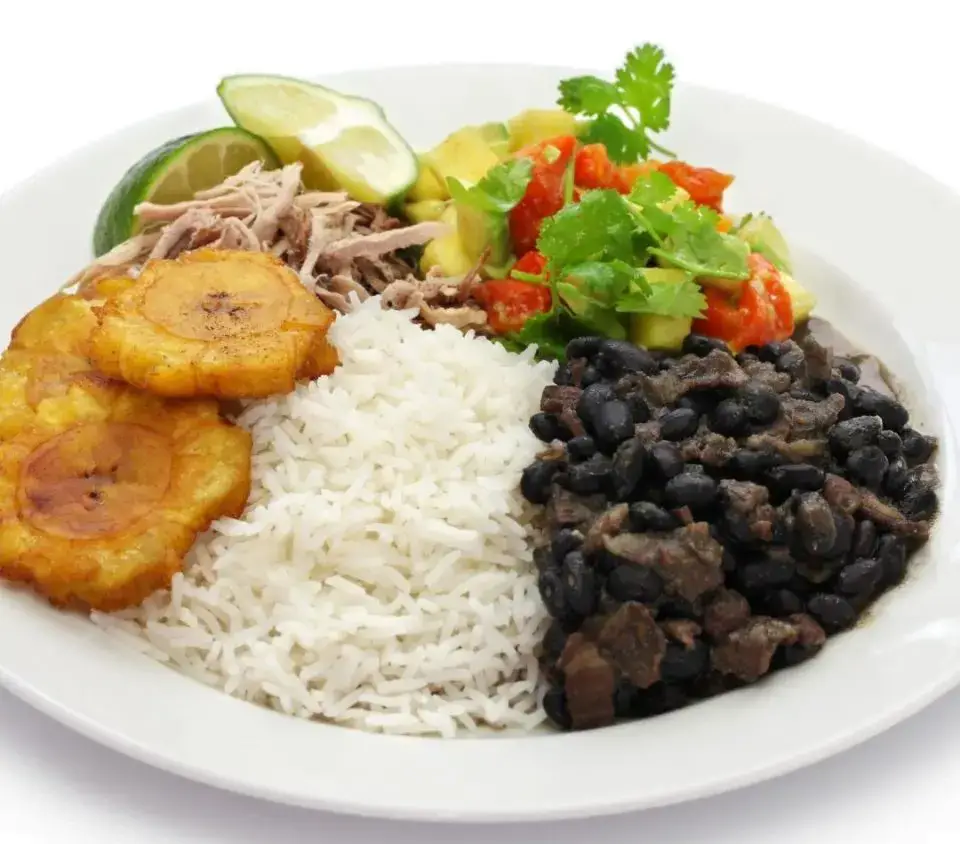
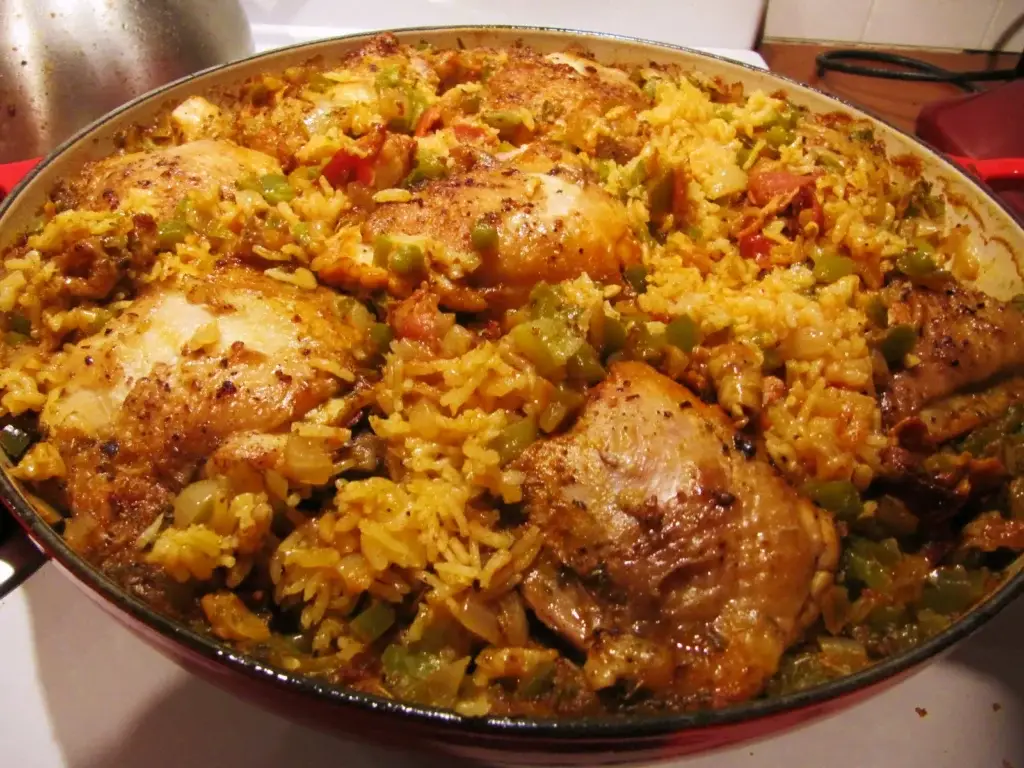
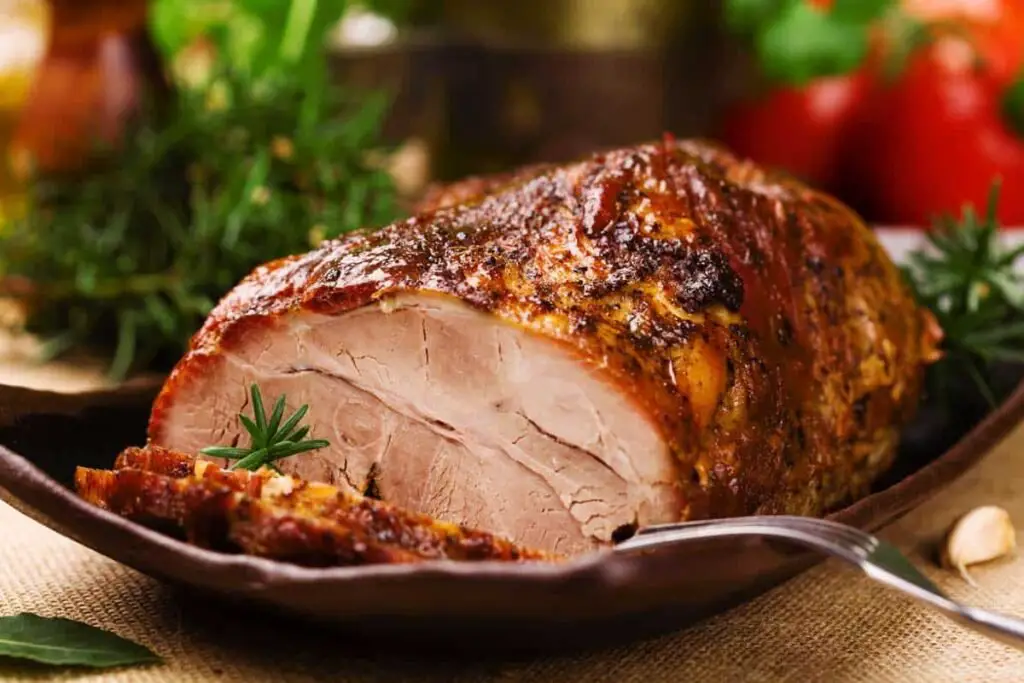
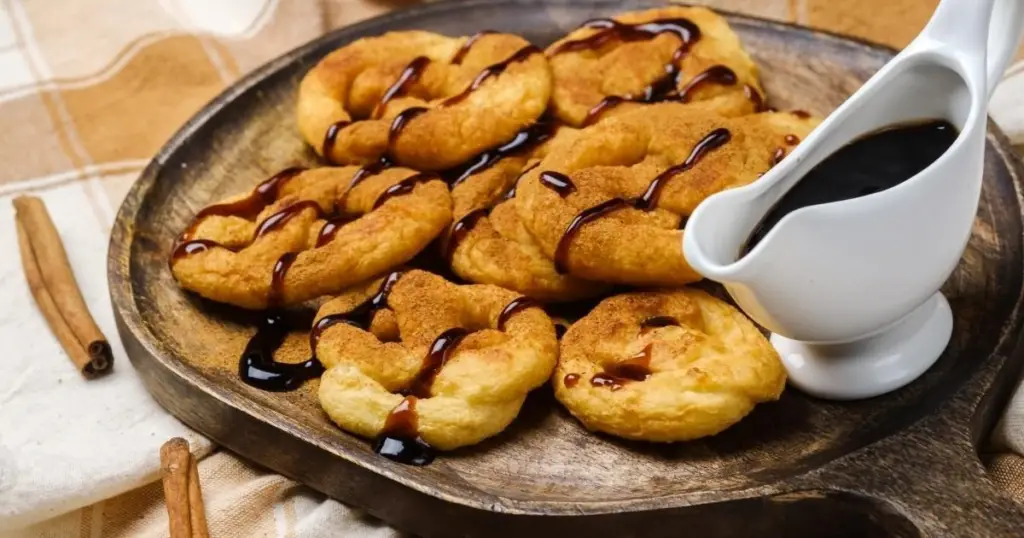

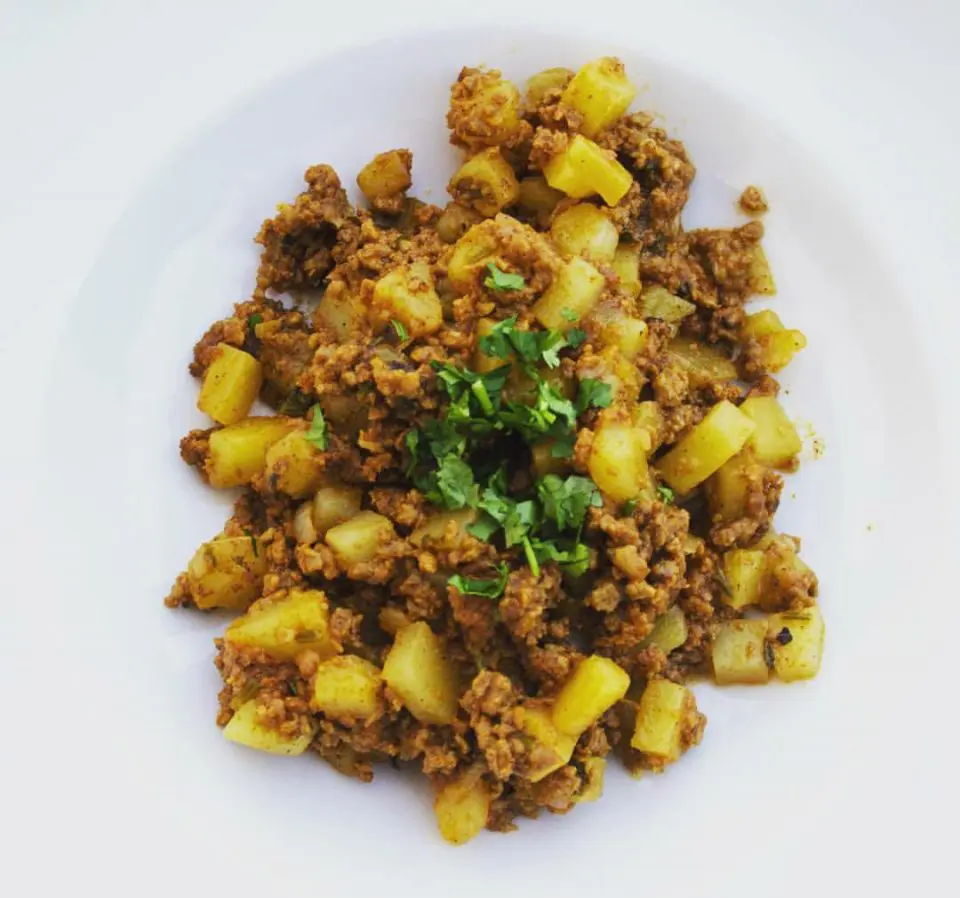
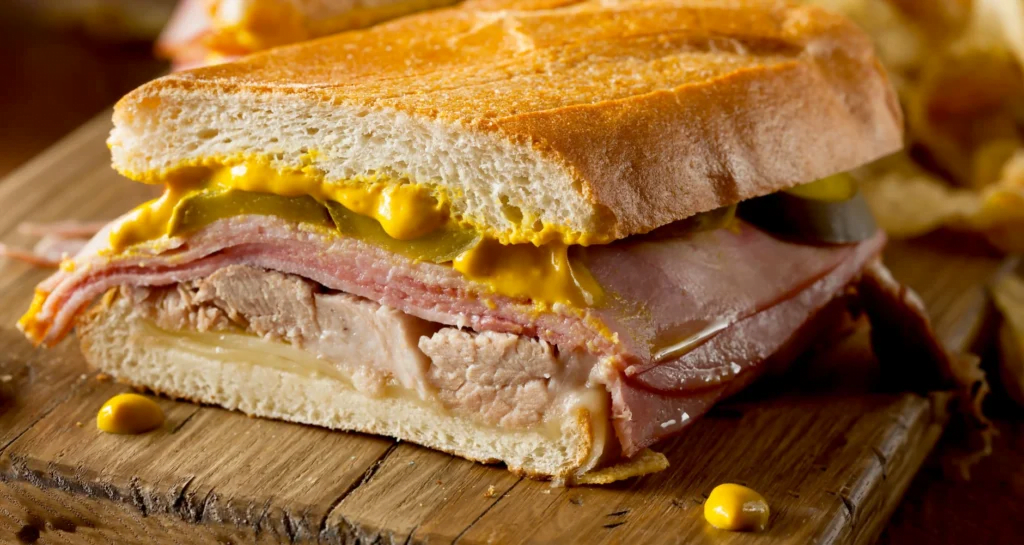
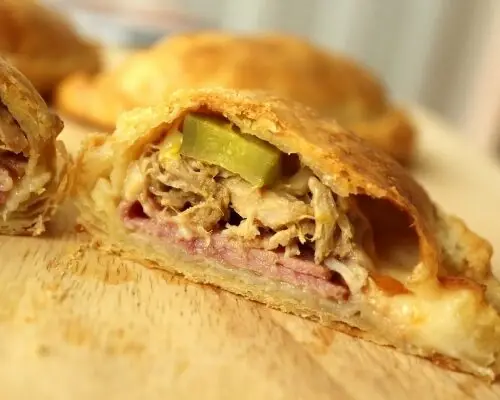
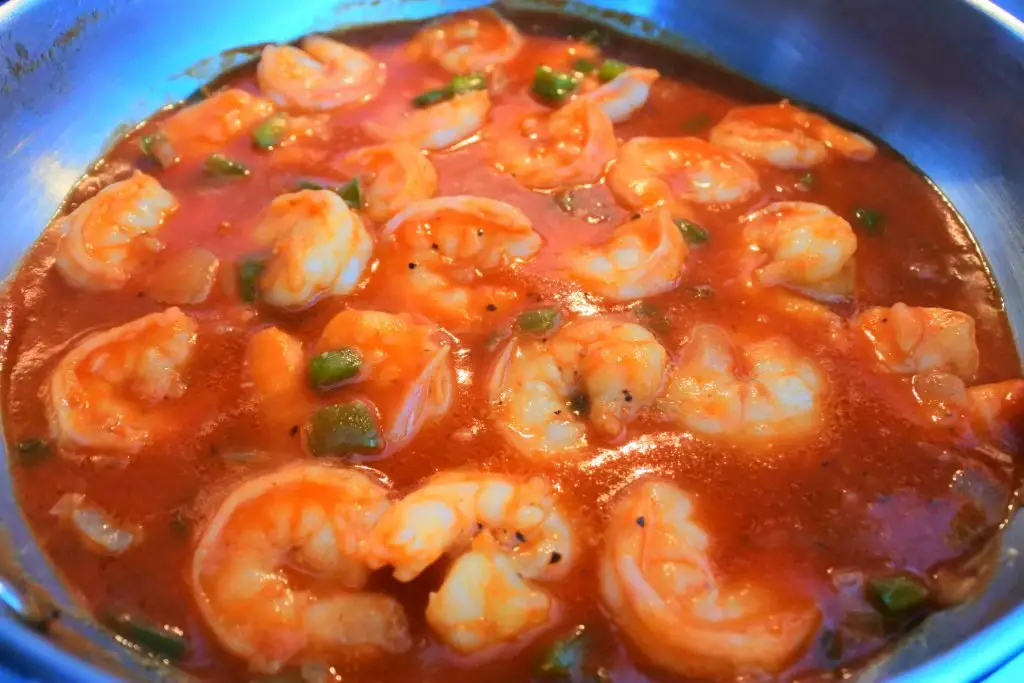
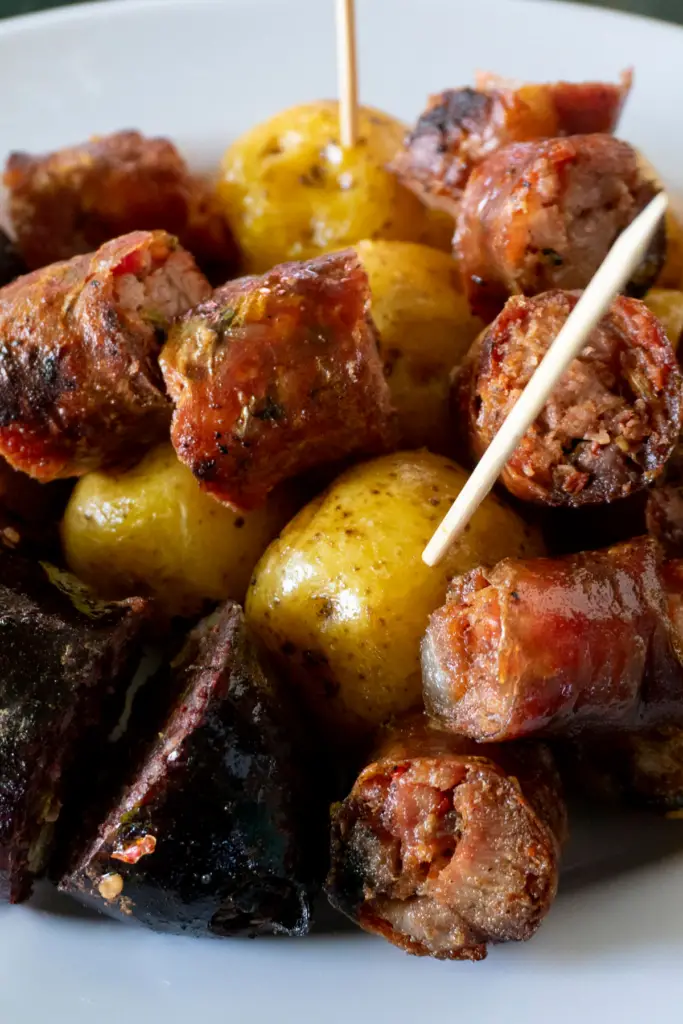
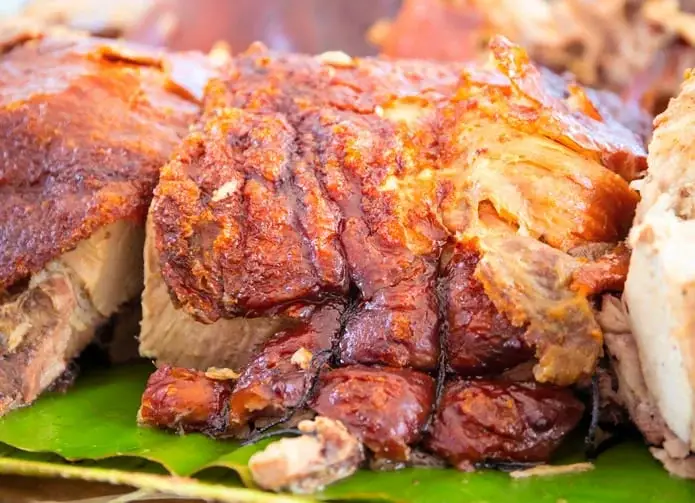
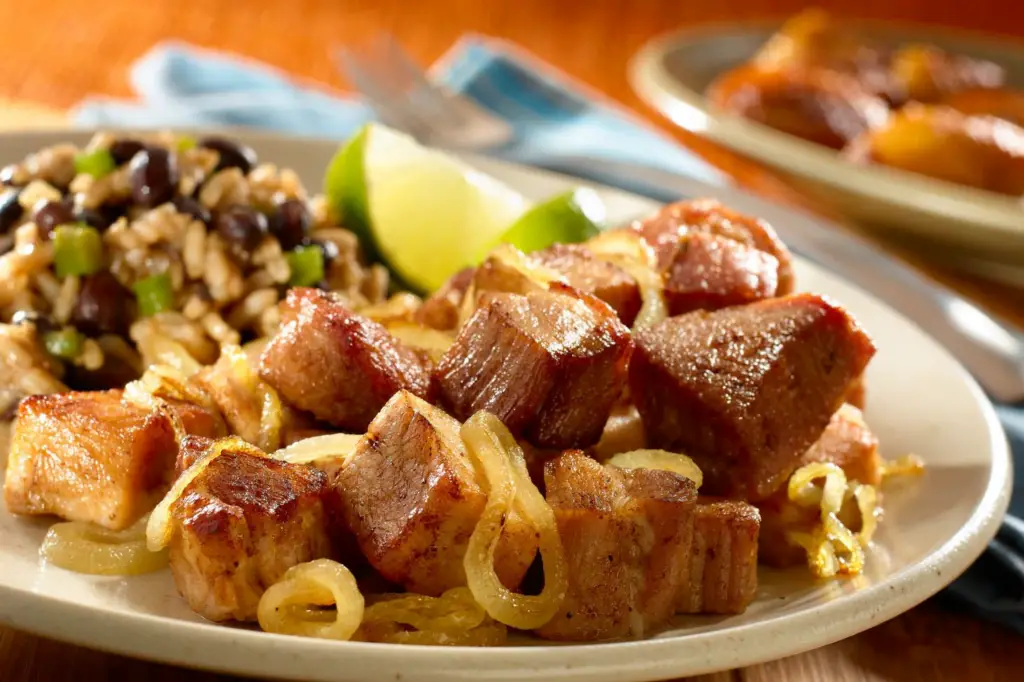
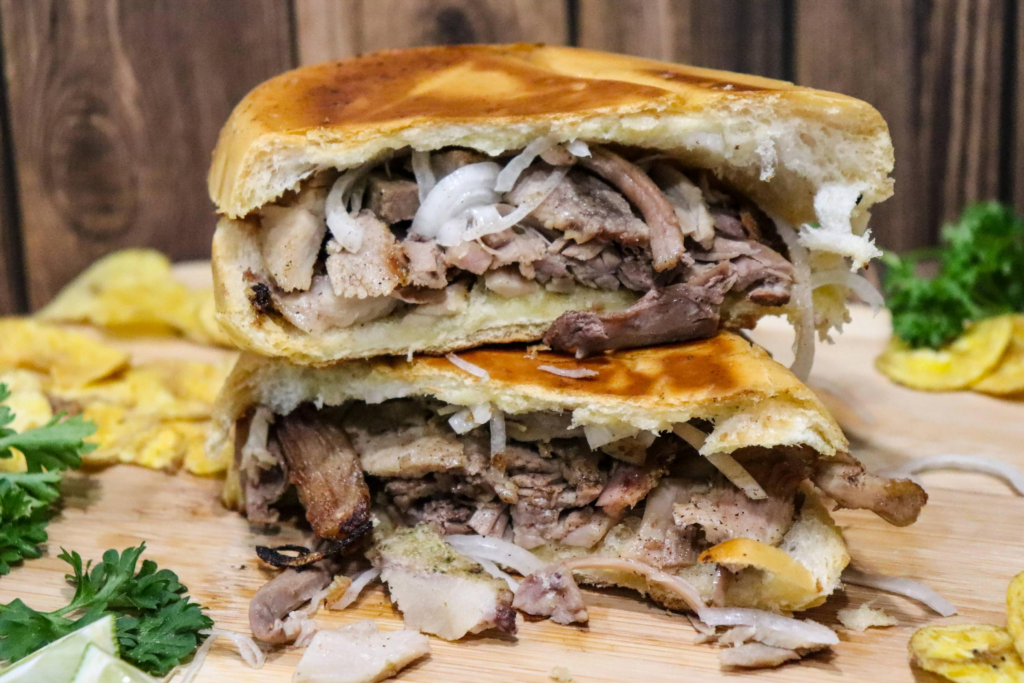
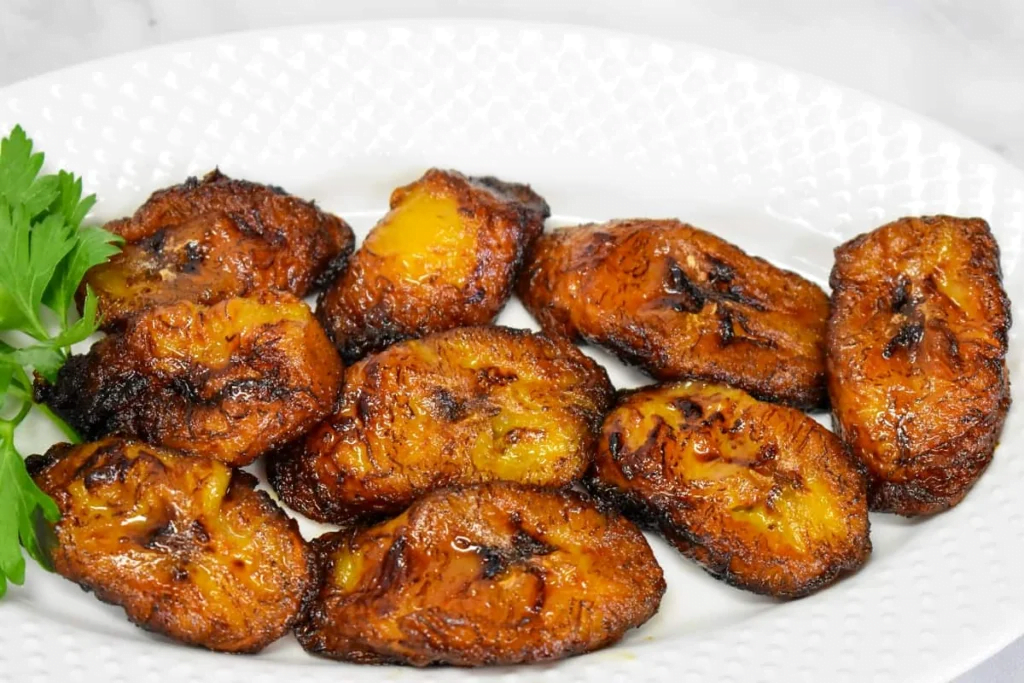
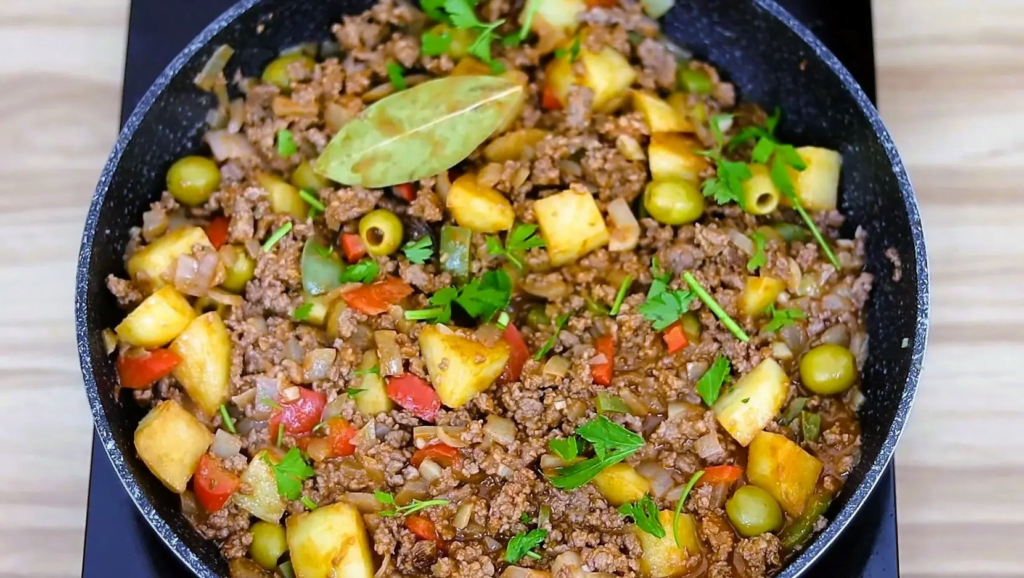
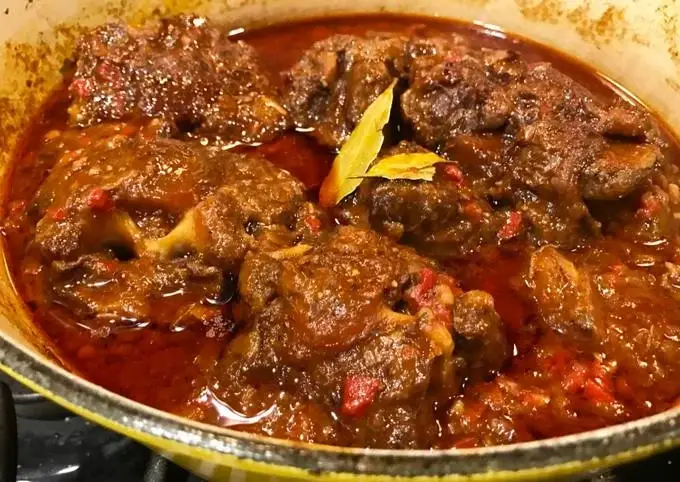
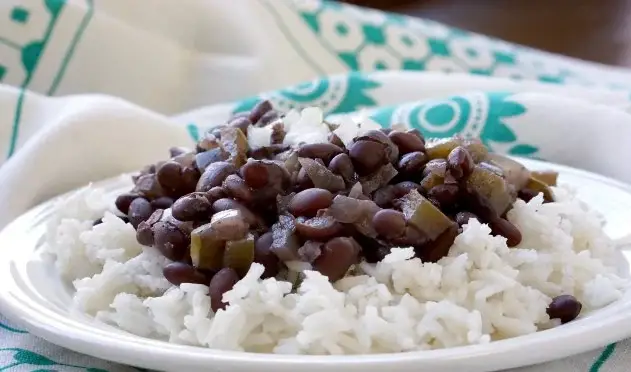
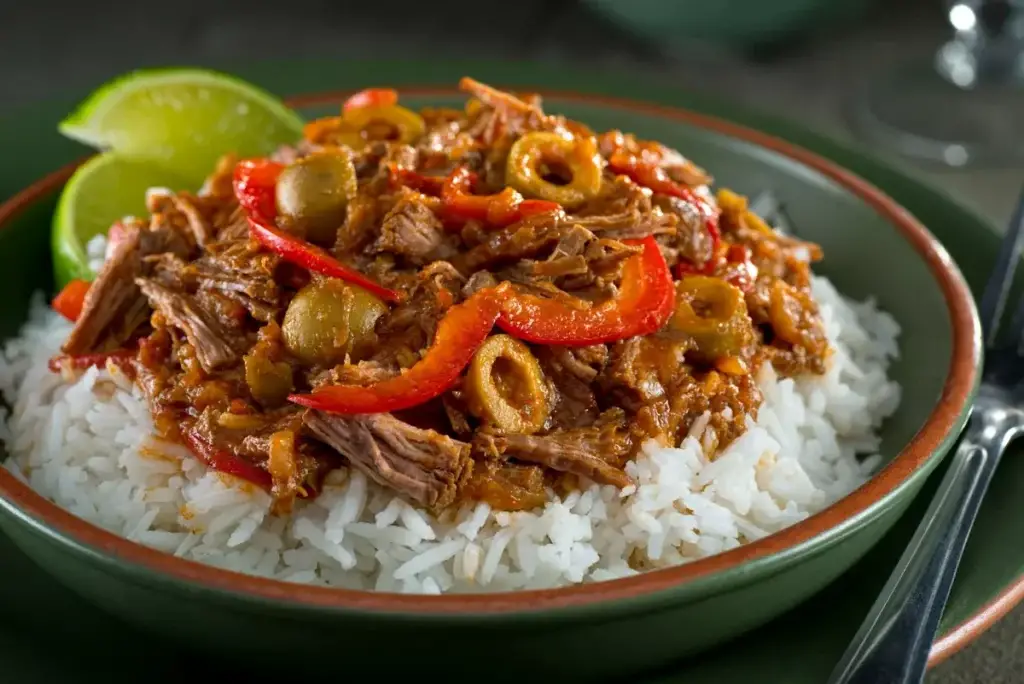
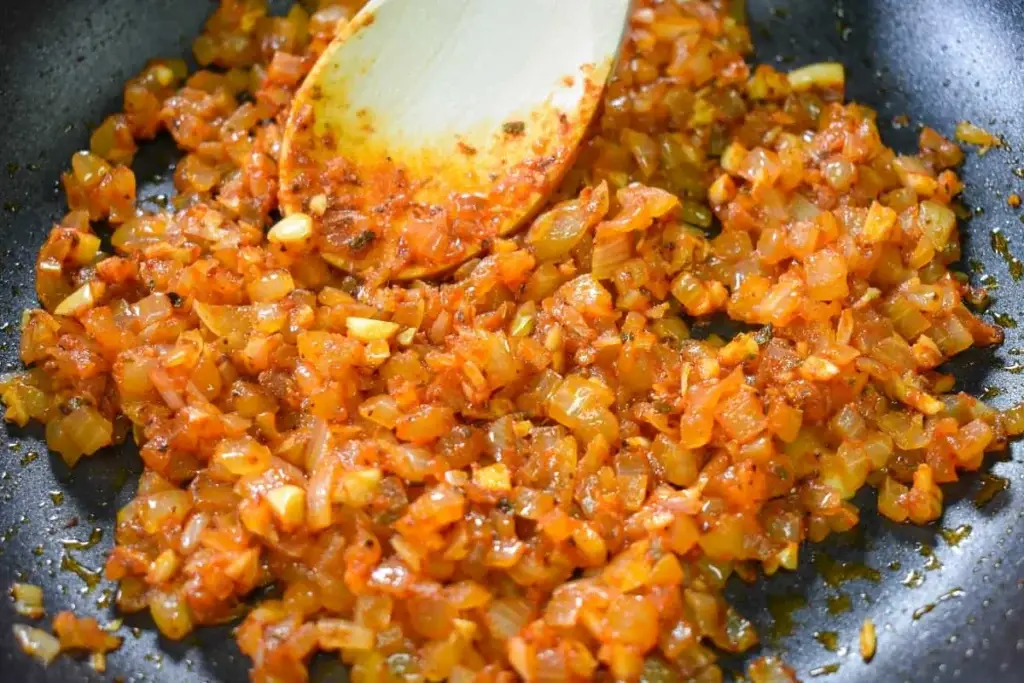
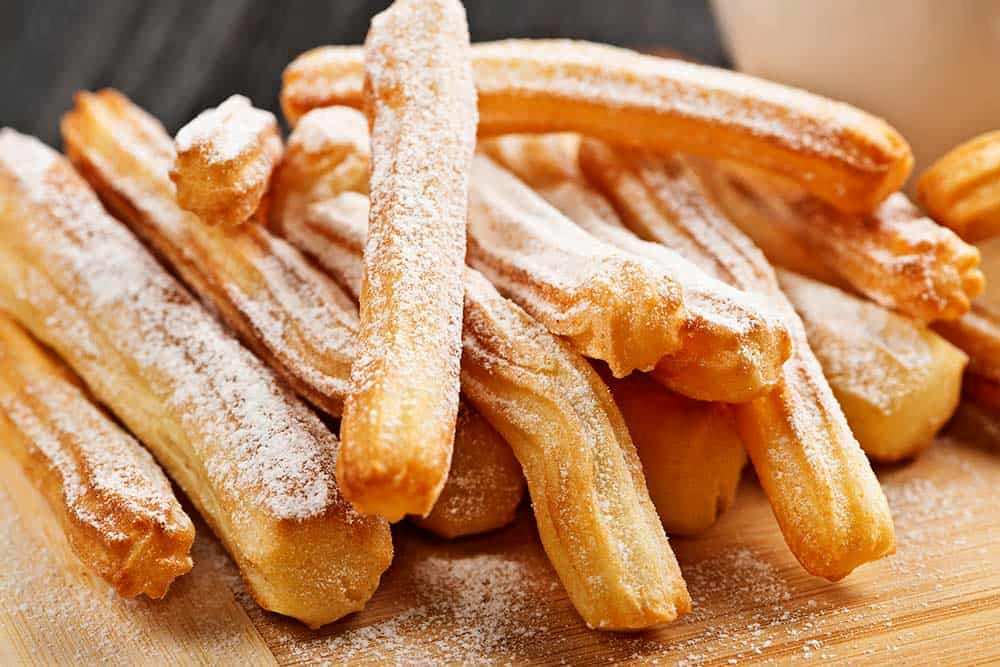
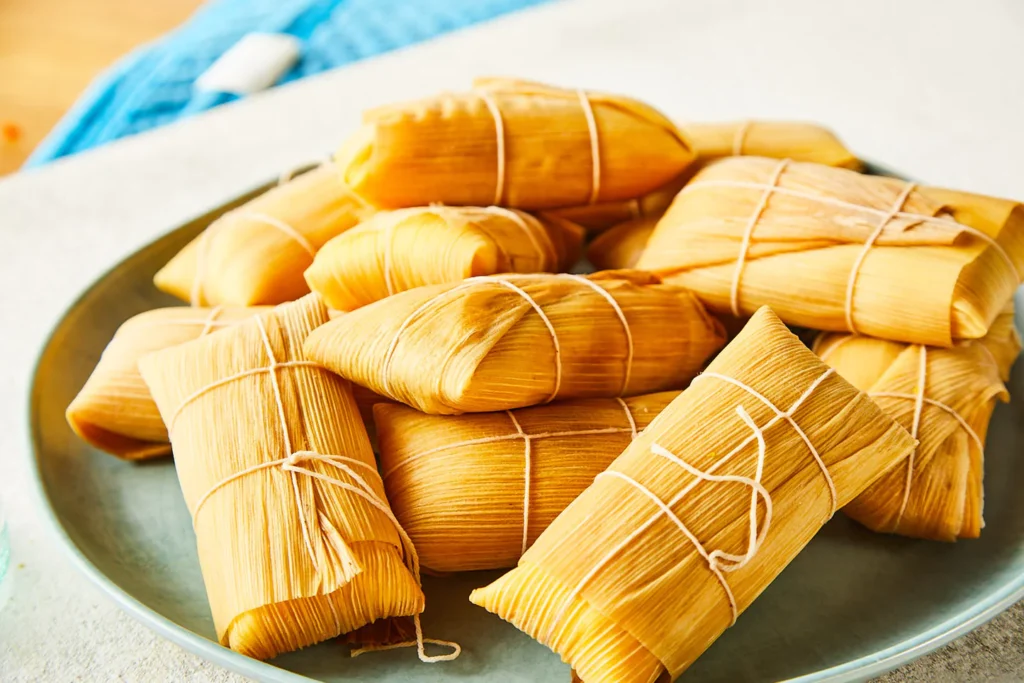
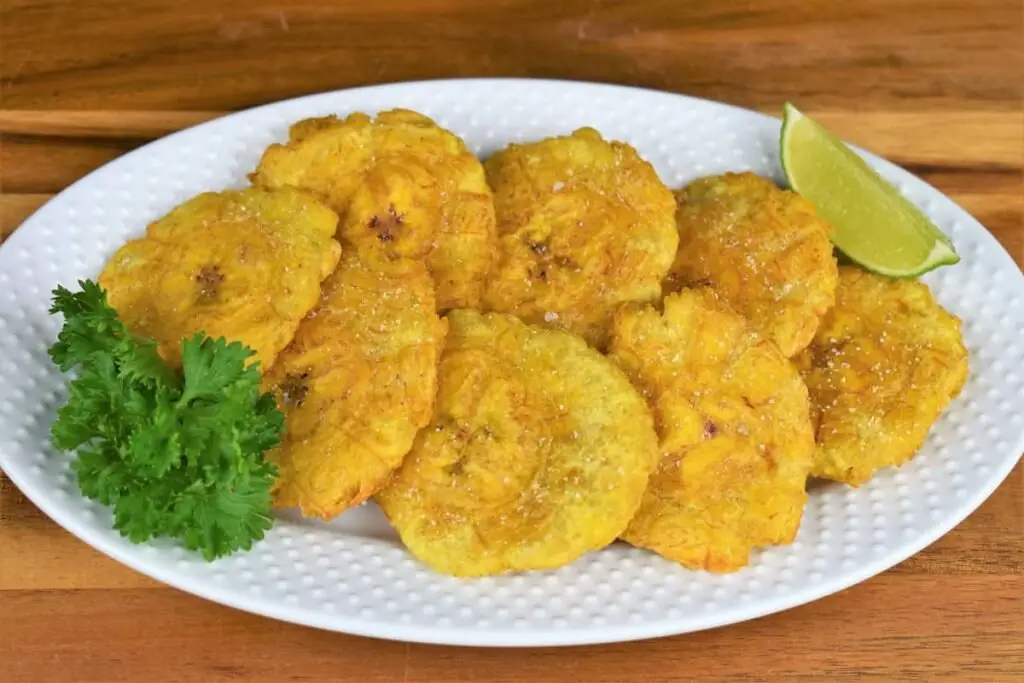

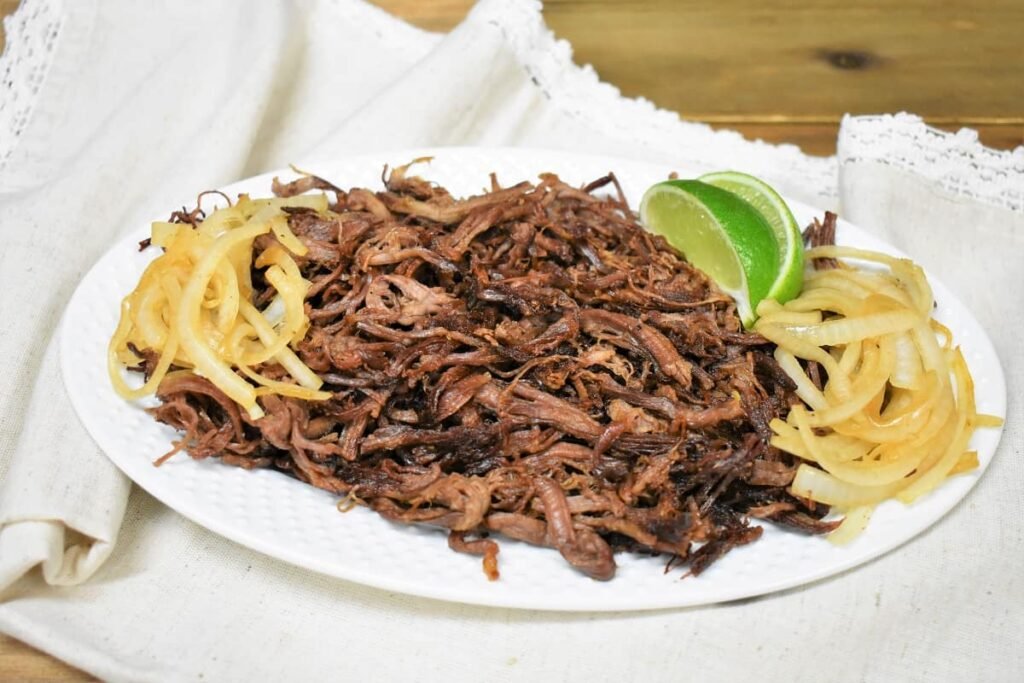
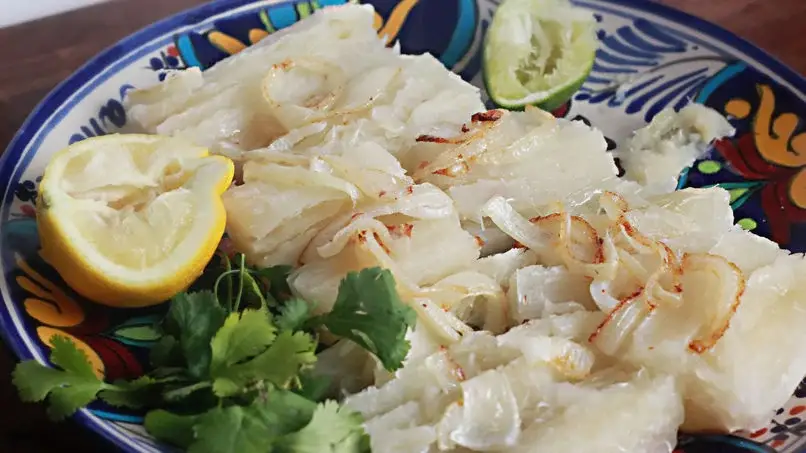
Interesting Facts About Cuba
Classic Cars Galore

Cuba is famous for its abundance of vintage American cars from the 1950s. Due to trade restrictions, Cubans have creatively maintained and repaired these cars, giving the streets of Cuba a unique charm reminiscent of a bygone era.
Limited Internet Access
Internet access in Cuba is limited and expensive. Public Wi-Fi hotspots are available in certain areas, but access is tightly controlled, leading to a unique social dynamic where people gather around these spots to connect with the outside world.
Healthcare and Education Priorities
Despite economic challenges, Cuba boasts a robust healthcare and education system. The country has one of the highest doctor-to-patient ratios in the world and offers free education up to the university level.
Dual Currency System
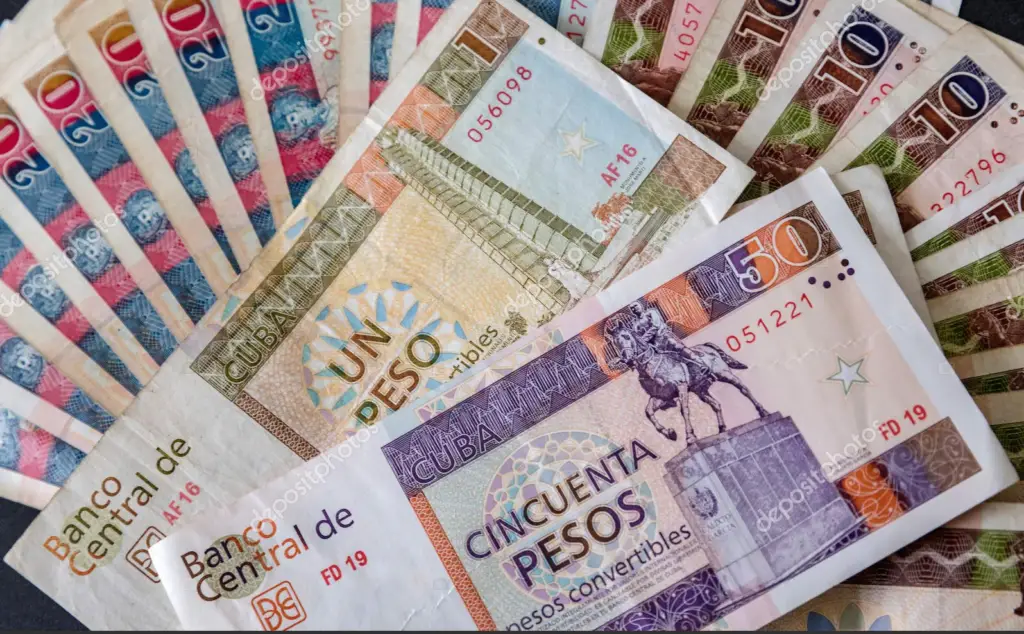
Cuba operates on a dual currency system with the Cuban peso (CUP) used by locals and the Cuban convertible peso (CUC) primarily used by tourists. This system can be confusing for visitors but is essential for managing the economy.
Rationed Goods
The Cuban government provides citizens with a ration book called “libreta,” which entitles them to a limited supply of basic goods like rice, beans, and cooking oil at subsidized prices.
This system helps ensure access to essential items despite economic challenges.
Bizarre Food Shortages
Cuba occasionally faces unusual food shortages due to various factors like import restrictions and inefficiencies in the distribution system.
Items like chicken, eggs, and cooking oil may suddenly disappear from shelves, leading to inventive culinary solutions.
Propaganda Billboards

Throughout Cuba, you’ll encounter colorful billboards and murals promoting the ideals of the Cuban Revolution and celebrating revolutionary figures like Che Guevara and Fidel Castro.
These displays are a ubiquitous part of the Cuban landscape.
Casas Particulares
To supplement their income, many Cubans rent out rooms in their homes to tourists. Known as “casas particulares,” these accommodations offer travelers a chance to experience Cuban hospitality firsthand and provide locals with extra income.
Music and Dance Everywhere
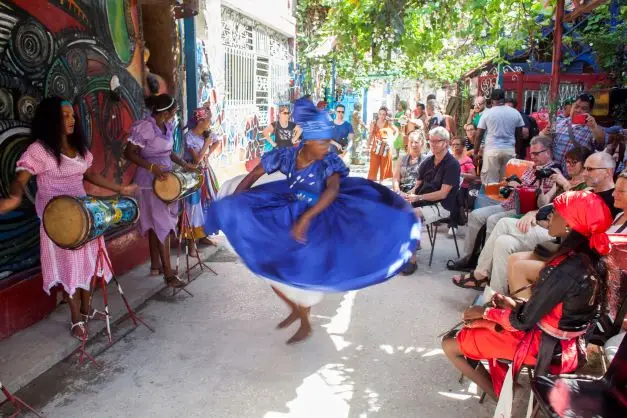
Music and dance are deeply ingrained in Cuban culture. From the lively rhythms of salsa and son to the soulful melodies of bolero, you’ll find music permeating every corner of Cuban life, from street corners to vibrant nightclubs.
Cuban Cigars

Cuba is renowned for its cigars, particularly the world-famous Cohiba brand. Cigar aficionados flock to Cuba to experience the country’s rich tobacco heritage and savor the flavors of hand-rolled cigars crafted by skilled artisans.
Cuba’s History and the Effect It Has Had on the Cuisine

Get ready to salsa your taste buds on a flavorful journey through Cuban history! From its vibrant cuisine to its iconic leaders and the diaspora that spread its magic across the globe.
Cuba’s story is a delectable tapestry woven with resilience, tradition, and innovation.
A Culinary Fiesta Through Time
Early Encounters
Imagine indigenous Taino cooking firepits mingling with the spices of Spanish conquistadors and African rhythms. Throw in Caribbean flair and tropical fruits, and you have the foundation of Cuban cuisine – a delightful fusion born from historical encounters.
Corn, beans, squash, fiery chili peppers, and sweet tropical fruits became the stars of the show.
Colonial Crossroads

Enter the Spanish with their cattle, pigs, and the rich flavors of Andalusia. Soon after, Chinese indentured laborers added their touch to Havana’s culinary scene, further enriching the island’s food culture.
The result? A unique blend of ingredients and techniques that continue to tantalize our palates today.
Revolution and Adaptation
In 1959, Fidel Castro’s revolution changed the course of Cuban history. With the U.S. embargo cutting off imports, Cubans had to get creative. Soviet influence brought wheat, pasta, and yogurt, while chicken and fish took center stage over pork.
This period, though challenging, showcased the Cuban spirit of adaptation.
Leaders Leaving Their Mark




Each leader, from Fulgencio Batista to the current president, Miguel Díaz-Canel, played a role in shaping the island’s political landscape and, consequently, its food culture.
Understanding their stories adds another layer of flavor to appreciating Cuban cuisine.

A Global Fiesta
But the story doesn’t end in Cuba. The Cuban diaspora, particularly in Miami, has played a crucial role in preserving and adapting their culinary heritage. American influences mingle with traditional flavors, creating innovative takes on classics like ropa vieja and tostones.
From nostalgic bites to modern twists, Cuban food abroad acts as a bridge between generations, a testament to resilience and cultural exchange.
So, whether you’re savoring a traditional dish in Havana or exploring the vibrant Cuban American food scene in Miami, remember: every bite tells a story.
Grab your metaphorical fork and join me on this delicious journey through the history, leadership, and diaspora that make Cuban cuisine a true world treasure!
References
- thespruceeats.com
- blog.amigofoods.com
- britannica.com
- thoughtco.com
- worldcrunch.com
- en.wikipedia.org
- blogs.lse.ac.uk
- mojitosbistro.com
- adhc.lib.ua.edu
- Cuban Cuisine – Wikipedia
How Cuba’s Climate and Geography has Influenced Cuban Cuisine




Imagine the tantalizing aroma of garlic mingling with tropical fruit sweetness, all under the warm Caribbean sun. That’s Cuba, an island nation where history, geography, and culture have conspired to create a truly unique and delicious food scene.
Let’s embark on a culinary adventure to discover the magic behind Cuban cuisine!
Island Crossroads
Picture Cuba, nestled just 90 miles from Florida, serving as the first and last Spanish colony in the Caribbean. This unique location acted as a crossroads, where Spanish conquistadors left their culinary mark before venturing onwards.
Many hailed from Andalusia, and their influence echoes in dishes like ropa vieja and picadillo. But the story doesn’t end there. In the 1800s, Chinese indentured laborers added their own touch to Havana’s food scene, contributing to the fascinating mosaic of flavors.
Tropical Bounty
Bathed in sunshine and blessed with fertile soil, Cuba’s tropical climate yields a vibrant tapestry of ingredients. Imagine juicy mangoes and pineapples infusing dishes with sweetness, while starchy plantains and root vegetables like malanga and yucca provide earthy comfort.
The ocean’s bounty is never far away, offering an abundance of fresh seafood that graces Cuban tables.
Adapting to Change
History has thrown its curveballs at Cuban cuisine, but the spirit of adaptation has always ensured its survival. The 1959 revolution and the U.S. embargo forced Cubans to get creative. While traditional imports became scarce, new influences from the Soviet Union, like wheat and yogurt, crept in.
Chicken and fish took center stage over pork, and resourceful cooks transformed green plantains into crispy tostones, a testament to African culinary roots.
A Global Fiesta
Interestingly, the story doesn’t end in Cuba. The vibrant Cuban diaspora, particularly in Miami, has become a torchbearer of their culinary heritage.
Here, American influences add a new twist, creating innovative takes on classic dishes like the iconic Cuban sandwich. From nostalgic bites to modern fusions, Cuban food abroad serves as a bridge between generations, a testament to resilience and cultural exchange.
So, whether you’re savoring a traditional ropa vieja in Havana or exploring the innovative Cuban American scene in Miami, remember: each bite tells a story. It’s a story of history, adaptation, and the enduring love for flavor that makes Cuban cuisine a true global treasure. Join me on this delicious journey, and let’s unlock the secrets of this captivating culinary island!
References
Understanding the Essence of Cuban Cuisine

Cuban cuisine explodes with vibrant flavors, tantalizing aromas, and a unique story in every bite. But what exactly makes it so distinct from its Caribbean neighbors?
Buckle up, food lovers, as we dive into the heart of Cuban cuisine, exploring the key ingredients, historical influences, and cultural magic that set it apart!
A Fusion Fiesta
Imagine the robust flavors of Spain mingling with the earthy rhythms of Africa and the sweet whispers of the Caribbean. That’s the essence of Cuban cuisine – a delightful fusion born from centuries of cultural exchange and historical encounters.
Spanish conquistadors brought their passion for garlic, olive oil, and spices, while enslaved Africans introduced okra, plantains, and black beans.
Chinese indentured laborers added noodles and stir-frying techniques, further enriching the island’s culinary tapestry.
Tropical Bounty on a Plate
Cuba’s sun-kissed climate nurtures a treasure trove of ingredients that define its dishes. Picture juicy mangoes and pineapples adding a burst of sweetness to savory meat stews like ropa vieja. Imagine starchy plantains transformed into crispy tostones, the perfect canvas for creamy mojo sauce.
Root vegetables like malanga and yucca provide a comforting warmth, while fresh seafood, plentiful thanks to the island’s location, graces tables in countless variations.
Revolution and Adaptation
History has played a crucial role in shaping Cuban cuisine. The 1959 revolution and the subsequent U.S. embargo forced islanders to get creative. Traditional imports became scarce, leading to inventive substitutions.
Soviet influence brought new ingredients like wheat and yogurt, while chicken and fish replaced pork as dominant proteins. This period, though challenging, showcased the Cuban spirit of adaptation and resourcefulness.
More Than Just a Meal
Cuban food is woven into the fabric of the island’s culture. Family gatherings center around communal meals, filled with laughter, music, and the warmth of shared experiences. Dishes tell stories of resilience, resourcefulness, and the enduring love for flavorful ingredients.
From the comforting simplicity of arroz con pollo to the celebratory opulence of lechon asado, each bite connects you to the heart of Cuban life.
Beyond the Island
The vibrant Cuban diaspora, particularly in Miami, has played a vital role in preserving and adapting their culinary heritage. Here, American influences add a new twist, creating innovative takes on classic dishes like the iconic Cuban sandwich.
This fusion scene reflects the dynamism of the Cuban American community, highlighting the ever-evolving nature of their food culture.
Join the Fiesta
Whether you’re savoring an authentic ropa vieja in Havana or exploring the modern Cuban American scene in Miami, remember: Cuban food is an invitation to a cultural celebration.
So, grab your metaphorical fork and join me on this delicious journey through the unique flavors, inspiring history, and enduring spirit that make Cuban cuisine a true global treasure!
Cuban Culinary Traditions

Cuban cuisine isn’t just about delicious dishes – it’s a vibrant tapestry woven with traditions that have evolved over centuries. From cooking methods to cultural quirks, every bite tells a story. So, what makes Cuban food stand out in the culinary world?
Buckle up, food adventurers, as we explore the unique traditions that define this captivating cuisine!
Savor the Mojo Magic
Imagine tender meat infused with the aroma of garlic, citrus, and spices. That’s the magic of mojo, a traditional sauce that elevates everything from roasted pork to grilled seafood.
This versatile condiment comes in various styles, reflecting regional influences and personal preferences, showcasing the depth and diversity of Cuban culinary heritage.
Embrace the Power of Plantains
Forget boring bread! In Cuba, plantains are the king of versatility. Fried into crispy tostones, mashed into savory fufú, or baked into sweet platanitos maduros, these starchy wonders offer a unique textural and flavor experience in every dish.
It’s a love affair with plantains that defines the Cuban culinary identity.
Celebrate Communal Feasts
Food brings people together in Cuba, and family meals are a cherished tradition. Imagine laughter filling the air as plates adorned with ropa vieja, arroz con pollo, and black beans are passed around, creating a symphony of flavors and shared experiences.
These gatherings solidify the importance of community and connection in Cuban culture.
Discover the Allure of Street Food
Cuban streets hum with the aroma of fritanga, a delicious medley of fried snacks. From savory croquetas and empanadas to sweet churros and buñuelos, these handheld treats offer a glimpse into the island’s culinary soul. They’re not just convenient bites – they’re a cultural experience, enjoyed by locals and visitors alike.
Dive into Coffee Rituals
Cubans take their coffee seriously. Strong, brewed in a Moka pot and sweetened with unrefined sugar, it’s more than just a beverage – it’s a daily ritual, a time for conversation and connection.
Whether enjoyed solo or shared with friends, Cuban coffee offers a window into the island’s laid-back lifestyle and strong cultural identity.
Unwind with Traditional Cocktails
In Cuba, cocktails are an art form. From the world-famous Mojito with its refreshing mint and lime to the rum-based Daiquiri in its many variations, these libations capture the island’s spirit of joy and celebration.
Each sip is a journey through Cuba’s history and cultural flair.
Explore Regional Delights
Cuban cuisine isn’t monolithic. Each region boasts its own specialties, reflecting local ingredients and traditions.
From the seafood-rich dishes of coastal areas to the hearty stews of the central provinces, exploring regional variations offers a fascinating journey through the diverse culinary landscape of Cuba.
So, are there traditions unique to Cuban cuisine? Absolutely! From the ubiquitous presence of plantains to the vibrant coffee culture, every aspect of Cuban food reflects the island’s history, cultural influences, and enduring spirit. Join me on this delicious adventure as we explore the unique traditions that set Cuban cuisine apart and invite you to experience its captivating magic!
Exploring the Cuban Ingredients: The Flavors of Cuba

Cuban cuisine is a tapestry woven with the vibrant colors and flavors of its ingredients:
- Tropical Fruits: Mango, papaya, guava, and pineapple are used in desserts, juices, and to complement savory dishes.
- Root Vegetables: Yuca, malanga, and boniato are staples, often boiled or fried.
- Beans and Rice: Black beans and rice, known as “moros y cristianos,” are a daily staple.
- Pork: The most common meat, used in dishes like lechón asado (roast pork).
- Seafood: Fresh from the surrounding waters, it’s a key component of the coastal diet.
- Citrus: Lime and sour orange are essential for marinades and dressings.
- Sugar Cane: The backbone of the island’s rum industry and sweet treats.
- Spices: Cumin, oregano, and bay leaves are the primary seasonings, used with a light touch.
These ingredients, when combined with the Cuban spirit of culinary creativity and resilience, create a cuisine that is both flavorful and deeply rooted in the island’s collective identity.
Cuban Cuisine – Citrus

Lime and sour orange are commonly used in Cuban cooking, adding a bright, acidic note to meat dishes and marinades.
These ingredients, along with a variety of herbs and spices, create the bold, complex flavors that define Cuban cuisine. Whether you’re looking to recreate an authentic Cuban dish or experiment with new flavors, these ingredients are a great place to start.
What is Typical Cuban Food?
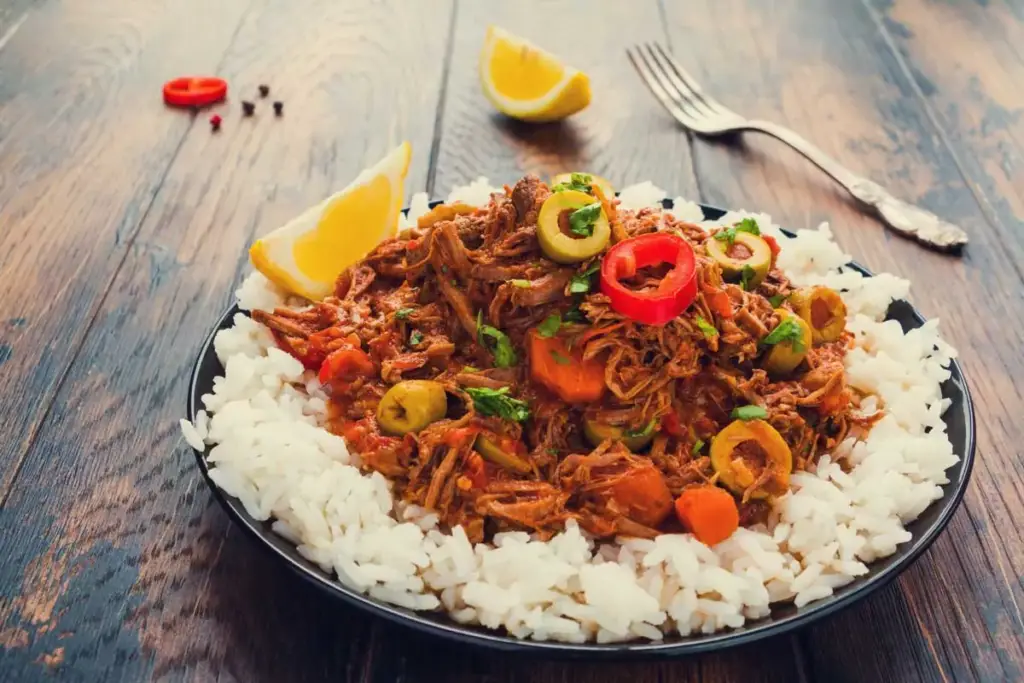
Get ready to embark on a culinary adventure to Cuba, where vibrant flavors and aromas tantalize your senses at every turn! Today, we’re diving into the heart of Cuban cuisine, exploring the most popular dishes that have captured the hearts (and stomachs) of locals and visitors alike.
So, grab your metaphorical plate and join me as we explore this delicious journey!
Ropa Vieja: The King of Cuban Cuisine
Imagine tender shredded beef simmered in a rich tomato sauce, infused with onions, peppers, and spices. This iconic dish, literally translating to “old clothes,” is a symbol of Cuban culinary heritage.
Its flavorful complexity and comforting texture make it a must-try for any Cuban food enthusiast.
Arroz con Pollo: A Classic Comfort Food
This dish is the epitome of Cuban comfort food. Imagine fluffy white rice cooked with succulent chicken pieces, seasoned with vibrant spices like cumin and oregano. It’s a simple yet satisfying combination that often serves as the foundation for a complete Cuban meal.
Picadillo: A Flavorful Ground Meat Delight
This versatile dish features seasoned ground meat (usually beef or pork) simmered with tomatoes, onions, peppers, and olives.
It can be enjoyed as a main course with rice and beans, stuffed into empanadas, or used as a flavorful topping for tostadas.
Moros y Cristianos: A Black Bean and Rice Symphony
This iconic dish, translating to “Moors and Christians,” symbolizes the fusion of African and Spanish influences in Cuban cuisine.
Black beans and white rice are cooked together, resulting in a flavorful and satisfying combination that pairs perfectly with various dishes.
Cubano: A Sandwich Fit for a King
This legendary sandwich is a masterpiece of savory goodness. Imagine slow-roasted pork, ham, Swiss cheese, pickles, mustard, and all the delicious juices nestled between crusty Cuban bread.
It’s a satisfying and flavorful handheld meal that’s perfect for lunch or a quick bite.
Tostones: Crispy Plantain Perfection
These golden-fried plantain slices are a staple in Cuban cuisine. They offer a delightful combination of crispy exterior and soft, starchy interior, making them the perfect canvas for savory dips like mojo or guacamole.
Lechon Asado: Roasted Pork Paradise
This slow-roasted pork dish is a festive favorite, often served on special occasions. The juicy, tender meat is infused with garlic, citrus, and spices, resulting in an explosion of flavor in every bite.
Yuca con Mojo: A Simple Yet Satisfying Side
Boiled yucca, a root vegetable, is served with a vibrant mojo sauce, creating a simple yet delicious side dish. It’s a healthy and flavorful option that complements various Cuban meals.
Flan: A Sweet Ending to a Delicious Journey
No Cuban meal is complete without a sweet ending. This creamy custard dessert, often infused with vanilla or coconut, is a delightful way to conclude your culinary adventure.
Tropical Fruit Fiesta
Cuba boasts an abundance of delicious tropical fruits like mangoes, pineapples, and papayas. These are often enjoyed fresh, incorporated into desserts, or used to create refreshing juices and smoothies.
Remember, this is just a glimpse into the diverse and delicious world of Cuban cuisine. Each dish tells a story, reflecting the island’s rich history and cultural influences. So, venture beyond this list, explore regional variations, and discover your own favorite flavors in this captivating culinary landscape!
What are 2 Cuban Foods Eaten in Florida?

With countless dishes to choose from, where do you start? Two icons instantly come to mind, offering a delicious introduction to the vibrant world of Cuban cuisine in Florida:
The Legendary Cubano
Picture perfectly toasted Cuban bread, layered with succulent roast pork, savory ham, Swiss cheese, tangy pickles, and a secret weapon – the golden mustard. Each bite is a symphony of textures and flavors, from the crispy bread to the juicy meats and the surprising kick of mustard.
No wonder the Cubano reigns supreme as the unofficial sandwich of Florida, enjoyed by locals and tourists alike.
A Bowl of Sunshine: Arroz con Pollo
Don’t underestimate the simplicity of this dish. Fluffy white rice infused with vibrant spices like cumin and oregano dances with tender pieces of chicken, creating a comforting and flavorful classic. Imagine the aroma wafting through a bustling Cuban restaurant, enticing you to savor its warmth and authenticity.
Arroz con Pollo isn’t just food; it’s a cultural touchstone, connecting generations and communities, one delicious bite at a time.
Beyond the Icons
While these two dishes offer a fantastic starting point, Cuban food in Florida is like a treasure trove waiting to be explored. From creamy ropa vieja, a savory shredded beef stew, to sweet and decadent platanos maduros, ripe fried plantains, there’s something for every palate.
Plus, Florida’s unique cultural blend gives rise to innovative fusion dishes, where Cuban flavors mingle with American influences, creating exciting new culinary experiences.
What is the Traditional Street Food of Cuba?
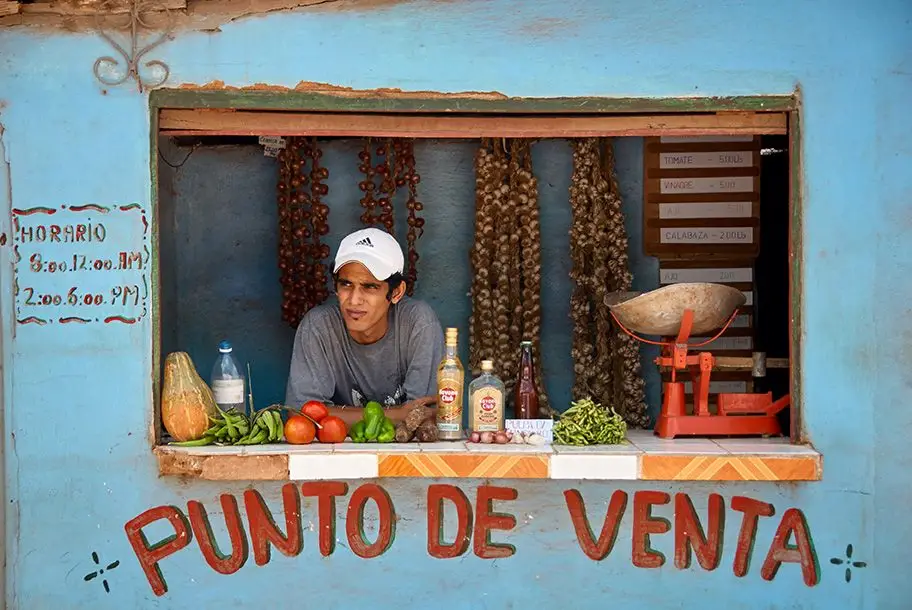
The ten most popular Cuban dishes sold on the streets are.
- Cuban Sandwich (Cubano): Ham, pork, pickles, mustard, Swiss.
- Tostones: Fried green plantains, savory perfection.
- Moros y Cristianos: Black beans, rice, harmony achieved.
- Pastelitos: Flaky pastry, sweet or savory.
- Churros: Fried dough, sugary delight.
- Malanga Fritters (Buñuelos): Malanga root, crispy goodness inside.
- Yuca con Mojo: Cassava, garlic citrus sauce.
- Ajiaco Criollo: Root vegetable stew, comforting warmth.
- Elote (Mexican Street Corn): Grilled corn, mayo, cotija cheese.
- Enchilado De Camarones: Shrimp, spicy tomato sauce, Cuba.
How Healthy is Cuban Food?

Cuban cuisine’s vibrant mix of flavors tantalizes our taste buds, but does it nourish our bodies too? Let’s explore the health aspects of this unique food culture and the well-being of Cubans on the island and in the United States.
Island Bounty: A Recipe for Health?
- Nature’s Goodness: Unlike many modern food cultures, Cuban cuisine leans heavily on organic farming. Scarcity of pesticides due to economic constraints has inadvertently turned organic into the norm. Imagine biting into a juicy mango or savoring a sun-ripened tomato, knowing they’re untouched by harmful chemicals.
- Fresh Favors: Cuban recipes are a symphony of fruits, vegetables, and herbs. Think aromatic garlic and cilantro in ropa vieja, or the sweet-tart punch of pineapple in a refreshing jugo. These ingredients pack a nutritional punch, offering vitamins, minerals, and antioxidants vital for good health.
- Homemade Harmony: Forget processed foods! Cubans take pride in cooking from scratch, relying on traditional methods like boiling, stewing, and grilling. This approach preserves nutrient content and avoids unhealthy additives often found in pre-packaged meals.
Living Longer in Cuba: A Balanced Equation?
- Healthcare Haven: Cuba boasts a robust healthcare system, with a high number of doctors and nurses per capita. This accessibility contributes to preventive care and early intervention, positively impacting overall health.
- Longevity Luster: Despite economic challenges, Cubans enjoy a life expectancy of over 78 years. This is a testament to the combined effect of their healthcare system and cultural focus on fresh, home-cooked meals.
- Challenges to Consider: However, the picture isn’t perfect. The prevalence of obesity, diabetes, and heart conditions are concerning trends. The national dish of meat, rice, and fried carbohydrates, while delicious, may contribute to these issues.
Cuban-Americans: Preserving Heritage, Facing New Challenges
- Fusion Flavors: In the U.S., Cuban-Americans have adapted their cuisine, incorporating American elements while keeping their heritage alive. Imagine a juicy Cubano sandwich with both Swiss cheese and a tangy pickle – a delicious example of this fusion.
- Affordability Factor: While finding pesticide-free ingredients remains crucial, affordability poses a challenge in the U.S. Balancing tradition with healthy choices can be difficult, especially for low-income families.
- Health Disparities: Similar to other immigrant communities, Cuban Americans face health disparities related to access to healthcare, dietary shifts, and lifestyle factors. Navigating these challenges requires targeted interventions and community support.
Cuban cuisine, with its emphasis on fresh ingredients and traditional cooking, offers a foundation for healthy living. However, both in Cuba and among Cuban Americans, certain challenges exist. Understanding these nuances and promoting accessible,
References
- yahoo.com
- baconismagic.ca
- bmj.com
- data.who.int
- dune.une.edu
- chefspencil.com
- apps.who.int
- statista.com
- population.un.org
- apps.who.int
- Global health estimates: Leading causes of death
- data.unicef.org
- unstats.un.org
Traditional Cuban Recipes you can try in your Kitchen
Exploring Cuban cuisine is like taking a bite out of the country’s rich cultural heritage. Traditional Cuban dishes are a medley of indigenous, African, and Spanish influences, with vibrant flavors and spices that are unique to this region. Let’s take a closer look at the key ingredients and flavors that define authentic Cuban dishes.
Cuban Food – Fritanga

A Taste of Cuba: Fritanga Fiesta
As a culinary enthusiast and the proud owner of a cozy restaurant, let’s embark on a flavorful journey to explore the delights of Cuban Fritanga. Originating from the vibrant streets of Havana, Fritanga is a celebration of bold flavors and diverse influences, reflecting the fusion of Spanish, African, and Caribbean culinary traditions.
This hearty and satisfying dish showcases the rich tapestry of Cuban cuisine, inviting you to savor a taste of the island’s history and culture.
Cuban Food – Ingredients for Fritanga:
- 1 lb pork shoulder, diced
- 1 lb yuca, peeled and cut into chunks
- 2 ripe plantains, sliced
- 1 lb malanga, peeled and sliced
- 1 cup calabaza squash, diced
- 1 cup boniato (sweet potato), diced
- 1 cup corn on the cob, cut into rounds
- 1 cup taro root, peeled and sliced
- 4 cups vegetable oil for frying
- 1 cup mojo sauce (garlic, sour orange juice, cumin, oregano, salt, and pepper)
- Salt and pepper to taste
Cuban Food – Recipe for Fritanga:
1. Prepare the Mojo Sauce:
a. In a bowl, combine minced garlic, sour orange juice, cumin, oregano, salt, and pepper. b. Set aside the mojo sauce for marinating and serving.
2. Marinate the Pork:
a. Rub the diced pork shoulder with a generous amount of mojo sauce. b. Allow the pork to marinate for at least 30 minutes.
3. Fry the Ingredients:
a. Heat vegetable oil in a deep fryer or large pot to 350°F (175°C). b. Fry the marinated pork until golden brown and cooked through. c. Fry yuca, plantains, malanga, calabaza squash, boniato, corn, and taro root until crispy and golden.
4. Serve and Enjoy:
a. Arrange the fried ingredients on a platter. b. Drizzle with additional mojo sauce for extra flavor. c. Serve hot and enjoy the delicious blend of textures and flavors.
Serving Information:
- Serves: 4 people
- Preparation Time: 30 minutes
- Cooking Time: 30 minutes
Nutritional Information (Per Serving):
- Calories: 550
- Protein: 15g
- Fat: 25g
- Carbohydrates: 70g
- Fiber: 8g
- Sodium: 380mg
Immerse yourself in the vibrant tastes of Cuban Fritanga, a dish that captures the essence of the island’s culinary heritage in every delicious bite!
Cuban Food – Buñuelos

Cuban Delight: Buñuelos Bliss
As a culinary explorer and the proud owner of a quaint restaurant, let’s unravel the flavors of Cuban cuisine with the delectable Buñuelos. Originating from the charming streets of Havana, Buñuelos are delightful fried dough treats that have become a cherished part of Cuban culinary traditions.
This sweet and crispy delight brings a touch of warmth and sweetness to the island’s vibrant food culture, making it a must-try for anyone seeking a taste of Cuba’s rich heritage.
Cuban Food – Ingredients for Buñuelos:
- 2 cups all-purpose flour
- 2 tablespoons sugar
- 1 teaspoon baking powder
- 1/4 teaspoon salt
- 1/2 cup milk
- 2 tablespoons unsalted butter, melted
- 1 teaspoon vanilla extract
- Vegetable oil for frying
- Cinnamon sugar for coating
Cuban Food – Recipe for Buñuelos:
1. Prepare the Dough:
a. In a bowl, whisk together flour, sugar, baking powder, and salt. b. Add milk, melted butter, and vanilla extract, stirring until a soft dough forms.
2. Shape and Fry the Buñuelos:
a. Heat vegetable oil in a deep pan or fryer to 350°F (175°C). b. Pinch off small portions of the dough, roll them into balls, and flatten slightly. c. Fry the buñuelos until golden brown, turning to ensure even cooking.
3. Coat in Cinnamon Sugar:
a. While still warm, roll the fried buñuelos in a mixture of cinnamon and sugar to coat them evenly.
4. Serve and Enjoy:
a. Arrange the cinnamon sugar-coated buñuelos on a serving platter. b. Serve warm and enjoy the crispy, sweet goodness.
Serving Information:
- Serves: 6 people
- Preparation Time: 15 minutes
- Cooking Time: 15 minutes
Nutritional Information (Per Serving):
- Calories: 180
- Protein: 3g
- Fat: 6g
- Carbohydrates: 30g
- Fiber: 1g
- Sodium: 120mg
Indulge in the simple joy of Buñuelos, where the crispy exterior and sweet embrace create a delightful Cuban experience for your taste buds!
Cuban Food – Croquetas

Cuban Comfort: Croquetas Chronicles
In the heart of Cuban cuisine, let’s delve into the flavorful world of Croquetas. Hailing from the lively streets of Havana, Croquetas are delightful, golden-brown nuggets of joy that have become a beloved snack and appetizer. This crispy and creamy delight reflects the fusion of Spanish influence in Cuban culinary traditions.
As a passionate food explorer and the owner of a charming restaurant, I’m excited to share the secrets of crafting these bite-sized wonders that capture the essence of Cuba’s culinary heritage.
Cuban Food – Ingredients for Croquetas:
- 2 cups cooked and shredded chicken
- 1/4 cup unsalted butter
- 1/4 cup all-purpose flour
- 1 1/2 cups whole milk
- 1/2 cup finely chopped onion
- 1/4 cup finely chopped bell pepper
- 1/4 cup finely chopped ham
- 1/4 cup grated Parmesan cheese
- 1/4 cup chopped fresh parsley
- Salt and pepper to taste
- 2 cups breadcrumbs
- 2 eggs, beaten
- Vegetable oil for frying
Cuban Food – Recipe for Croquetas:
1. Prepare the Chicken Mixture:
- a. In a skillet, melt butter and sauté chopped onions and bell peppers until soft.
- b. Add flour to create a roux, then gradually whisk in the milk until smooth.
- c. Stir in shredded chicken, chopped ham, Parmesan cheese, and fresh parsley.
- d. Season with salt and pepper, cooking until the mixture thickens.
- e. Allow the chicken mixture to cool completely.
2. Shape and Coat the Croquetas:
- a. Take a spoonful of the cooled mixture and shape it into small cylinders or balls.
- b. Roll each croqueta in breadcrumbs, then dip into beaten eggs, and coat again in breadcrumbs.
3. Fry to Golden Perfection:
- a. Heat vegetable oil in a pan to 350°F (175°C).
- b. Fry the croquetas until golden brown, ensuring even cooking by turning them as needed.
4. Serve and Enjoy:
- a. Drain excess oil on paper towels.
- b. Serve the croquetas hot, savoring the crispy exterior and creamy, flavorful interior.
Serving Information:
- Serves: 8 people (4 croquetas per serving)
- Preparation Time: 20 minutes
- Cooking Time: 15 minutes
Nutritional Information (Per Serving):
- Calories: 280
- Protein: 12g
- Fat: 15g
- Carbohydrates: 21g
- Fiber: 2g
- Sodium: 320mg
Experience the comforting embrace of Cuban Croquetas – a true embodiment of the island’s culinary warmth and tradition!
Cuban Food – Empanadas

Savor the Flavor: Cuban Empanada Fiesta
Get ready to embark on a culinary adventure as we explore the rich and savory world of Cuban Empanadas. Originating from the bustling kitchens of Cuba, these delightful pastries are a testament to the fusion of Spanish, African, and Caribbean influences.
As a dedicated food explorer and the proud owner of a charming restaurant, I am thrilled to share the secrets of crafting these savory pockets of joy that bring the essence of Cuba to your plate.
Cuban Food – Ingredients for Cuban Empanadas:
- 2 cups all-purpose flour
- 1/2 cup unsalted butter, cold and diced
- 1/2 cup water
- 1/2 teaspoon salt
- 1 lb ground beef
- 1 cup finely chopped onion
- 1/2 cup finely chopped bell pepper
- 2 cloves garlic, minced
- 1 teaspoon ground cumin
- 1 teaspoon smoked paprika
- Salt and pepper to taste
- 1 cup pitted green olives, sliced
- 1/2 cup raisins
- 1/4 cup tomato sauce
- Vegetable oil for frying
- 1 egg (for egg wash)
Cuban Food – Recipe for Cuban Empanadas:
1. Prepare the Dough:
- a. In a bowl, combine flour and salt.
- b. Add cold, diced butter and mix until crumbly.
- c. Gradually add water, kneading until a smooth dough forms.
- d. Cover and refrigerate for at least 30 minutes.
2. Cook the Filling:
- a. In a skillet, brown ground beef over medium heat.
- b. Add chopped onions, bell peppers, and garlic. Sauté until vegetables are tender.
- c. Season with cumin, smoked paprika, salt, and pepper.
- d. Stir in sliced olives, raisins, and tomato sauce. Simmer until flavors meld.
3. Shape and Fill Empanadas:
- a. Preheat oven to 375°F (190°C).
- b. Roll out the chilled dough and cut circles.
- c. Place a spoonful of filling in the center of each circle.
- d. Fold the dough over, creating a half-moon shape, and seal the edges.
4. Fry or Bake:
- a. Heat vegetable oil in a pan to 350°F (175°C) for frying.
- b. Fry empanadas until golden brown or bake on a lined tray until golden.
5. Serve and Enjoy:
- a. Drain excess oil for fried empanadas.
- b. Serve warm and savor the perfect blend of flaky crust and flavorful filling.
Serving Information:
- Serves: 6 people (2 empanadas per serving)
- Preparation Time: 45 minutes
- Cooking Time: 20 minutes (frying) or 25 minutes (baking)
Nutritional Information (Per Serving):
- Calories: 380
- Protein: 15g
- Fat: 20g
- Carbohydrates: 35g
- Fiber: 3g
- Sodium: 420mg
Indulge in the taste of Cuba with these savory Empanadas – a delightful blend of culture and flavor in every bite!
Cuban Food – Sweet Churros

Cuban Bliss: Sweet Churros Extravaganza
Join me on a delightful journey to discover the sweet side of Cuban cuisine with our spotlight on Sweet Churros. Originating from the vibrant streets of Havana, these golden delights are a testament to the fusion of Spanish and Caribbean influences.
As a passionate food explorer and the owner of a cozy restaurant, I’m thrilled to share the secrets of crafting these sweet treats that embody the warmth and flavor of Cuba’s culinary heritage.
Cuban Food – Ingredients for Sweet Churros:
- 1 cup water
- 1/2 cup unsalted butter
- 1 tablespoon granulated sugar
- 1/4 teaspoon salt
- 1 cup all-purpose flour
- 3 large eggs
- Vegetable oil for frying
- 1/2 cup granulated sugar (for coating)
- 1 teaspoon ground cinnamon (for coating)
Cuban Food – Recipe for Sweet Churros:
1. Prepare the Choux Pastry:
- a. In a saucepan, combine water, butter, sugar, and salt. Bring to a boil.
- b. Remove from heat and add the flour. Stir vigorously until a smooth dough forms.
- c. Allow the dough to cool slightly, then beat in the eggs one at a time until well incorporated.
2. Shape and Fry the Churros:
- a. Heat vegetable oil in a pan to 375°F (190°C).
- b. Transfer the choux pastry to a piping bag fitted with a star tip.
- c. Pipe 4-inch strips of dough into the hot oil, cutting with scissors.
- d. Fry until golden brown, then drain on paper towels.
3. Coat in Cinnamon Sugar:
- a. In a bowl, combine granulated sugar and ground cinnamon.
- b. Roll the fried churros in the cinnamon sugar mixture, coating them evenly.
4. Serve and Enjoy:
- a. Arrange the sweet churros on a serving plate.
- b. Serve warm and savor the crispy exterior and tender, sweet interior.
Serving Information:
- Serves: 6 people (3 churros per serving)
- Preparation Time: 15 minutes
- Cooking Time: 15 minutes
Nutritional Information (Per Serving):
- Calories: 280
- Protein: 5g
- Fat: 16g
- Carbohydrates: 30g
- Fiber: 1g
- Sodium: 120mg
Immerse yourself in the sweet indulgence of Cuban Sweet Churros – a delightful taste of Havana in every bite!
Cuban Food – Carne con Papa (Meat and Potatoes)

Hearty Comfort: Carne con Papa – A Cuban Comfort Classic
Delve into the heart of Cuban comfort with Carne con Papa, a soul-satisfying dish that embodies the warmth and flavors of traditional Cuban home cooking. Rooted in the cultural tapestry of the island, this recipe has been passed down through generations, offering a taste of Cuba’s familial and culinary heritage.
As a passionate food explorer and the proud owner of a cozy restaurant, I’m excited to share the story and essence of Carne con Papa.
Cuban Food – Ingredients for Carne con Papa:
- 2 lbs beef stew meat, cubed
- 4 large potatoes, peeled and diced
- 1 large onion, finely chopped
- 4 cloves garlic, minced
- 1 bell pepper, diced
- 1 can (14 oz) crushed tomatoes
- 1/4 cup tomato paste
- 1 cup beef broth
- 1 teaspoon ground cumin
- 1 teaspoon dried oregano
- Salt and pepper to taste
- 2 tablespoons vegetable oil
- Fresh cilantro for garnish
Cuban Food – Recipe for Carne con Papa:
1. Sear the Meat:
- a. Heat Oil: In a large pot, heat vegetable oil over medium-high heat.
- b. Sear Meat: Add cubed beef stew meat, browning on all sides.
2. Sauté Aromatics:
- a. Cook Onion and Garlic: Add finely chopped onion and minced garlic to the pot, sautéing until softened.
- b. Introduce Bell Pepper: Include diced bell pepper, continuing to sauté until vegetables are tender.
3. Simmer with Tomatoes:
- a. Add Crushed Tomatoes: Pour in crushed tomatoes and tomato paste, stirring to combine.
- b. Infuse Flavors: Season with ground cumin, dried oregano, salt, and pepper.
- c. Pour Beef Broth: Add beef broth to the pot, allowing the mixture to simmer.
4. Incorporate Potatoes:
- a. Add Potatoes: Gently fold in diced potatoes, ensuring they are evenly coated with the flavorful sauce.
- b. Simmer Until Tender: Let the dish simmer until the potatoes are tender and the meat is fully cooked.
5. Garnish and Serve:
- a. Sprinkle Cilantro: Before serving, sprinkle fresh cilantro over the Carne con Papa for a burst of freshness.
- b. Serve Hot: Dish out this hearty comfort meal, inviting everyone to savor the Cuban flavors.
Serving Information:
- Serves: 6 people
- Preparation Time: 20 minutes
- Cooking Time: 1 hour
- Calories: 380 per serving
- Protein: 25g
- Fat: 15g
- Carbohydrates: 35g
- Fiber: 5g
- Sodium: 780mg
Immerse yourself in the comforting embrace of Cuban tradition with Carne con Papa, a flavorful celebration of meat and potatoes that brings the essence of home-cooked goodness to your table!
Cuban Food – Pan Con Lechón (Cuban Roast Pork Sandwich)

Cuban Culinary Marvel: Pan Con Lechón Extravaganza
Embark on a gastronomic journey as we explore the flavors of Cuba through the iconic Pan Con Lechón, a delectable Cuban Roast Pork Sandwich. Originating from the heart of Cuban street food culture, this sandwich is a delicious marriage of succulent roasted pork, crispy bread, and vibrant tropical flavors.
As a fervent food enthusiast and the owner of a charming restaurant, I’m thrilled to share the essence of this culinary delight that captures the spirit of Cuban cuisine.
Cuban Food – Ingredients for Pan Con Lechón:
- 3 lbs pork shoulder, boneless
- 1 cup sour orange juice (or 1/2 cup orange juice + 1/2 cup lime juice)
- 6 cloves garlic, minced
- 2 teaspoons dried oregano
- 2 teaspoons ground cumin
- 2 teaspoons salt
- 1 teaspoon black pepper
- 1 large onion, thinly sliced
- 1 cup mojo marinade (reserved)
- 4 Cuban bread rolls
- 1 cup mustard
- 8 slices Swiss cheese
- Dill pickles, sliced
Cuban Food – Recipe for Pan Con Lechón:
1. Marinate the Pork:
- a. In a bowl, mix sour orange juice, minced garlic, dried oregano, ground cumin, salt, and black pepper.
- b. Place the pork shoulder in a large resealable bag, pour in the marinade, and refrigerate for at least 4 hours or overnight.
2. Roast the Pork:
- a. Preheat the oven to 325°F (163°C).
- b. Place the marinated pork in a roasting pan, add sliced onions, and pour in 1 cup of mojo marinade.
- c. Roast for approximately 3 hours or until the pork is fork-tender.
3. Assemble the Sandwich:
- a. Split Cuban bread rolls and spread mustard on both sides.
- b. Layer sliced roasted pork on the bread, add Swiss cheese, and top with dill pickle slices.
- c. Press the sandwich together and cut into halves.
4. Serve and Enjoy:
- a. Serve the Pan Con Lechón sandwiches hot, savoring the combination of juicy pork, tangy mustard, and the freshness of pickles.
Serving Information:
- Serves: 4 people (1 sandwich per serving)
- Preparation Time: 20 minutes
- Marinating Time: 4 hours or overnight
- Cooking Time: 3 hours
Nutritional Information (Per Serving):
- Calories: 650
- Protein: 35g
- Fat: 25g
- Carbohydrates: 70g
- Fiber: 5g
- Sodium: 1100mg
Transport your taste buds to the streets of Cuba with this Pan Con Lechón – a culinary masterpiece that delivers a flavorful punch of Cuban tradition!
Cuban Food – Arroz Con Huevo Frito (Rice and Fried Eggs)

Cuban Comfort on a Plate: Arroz Con Huevo Frito
Let’s take a culinary voyage to the heart of Cuban comfort with Arroz Con Huevo Frito, a classic combination of rice and fried eggs. Originating from the rustic kitchens of Cuba, this dish reflects the simplicity and rich flavors of traditional Cuban home cooking.
As a devoted food explorer and the proprietor of a cozy restaurant, I’m excited to share the essence of this soul-satisfying dish that has been a staple on Cuban tables for generations.
Cuban Food – Ingredients for Arroz Con Huevo Frito:
- 2 cups long-grain white rice
- 4 cups water
- 2 tablespoons vegetable oil
- 1 large onion, finely chopped
- 1 bell pepper, diced
- 3 cloves garlic, minced
- 1 can (15 oz) black beans, drained and rinsed
- 1 teaspoon ground cumin
- Salt and pepper to taste
- 4 large eggs
- Fresh cilantro, chopped (for garnish)
Cuban Food – Recipe for Arroz Con Huevo Frito:
1. Prepare the Rice:
- a. Rinse the rice under cold water until the water runs clear.
- b. In a pot, bring 4 cups of water to a boil.
- c. Add rice, reduce heat, cover, and simmer for 18-20 minutes or until rice is tender.
2. Sauté the Aromatics
- a. In a large skillet, heat vegetable oil over medium heat.
- b. Add chopped onions, diced bell pepper, and minced garlic.
- c. Sauté until vegetables are tender.
3. Mix in Black Beans and Cumin:
- a. Stir in the drained black beans, ground cumin, salt, and pepper.
- b. Cook for an additional 5 minutes, allowing flavors to meld.
4. Fry the Eggs:
- a. In a separate pan, fry the eggs to your liking (sunny-side-up is traditional).
5. Assemble and Serve:
- a. Fluff the cooked rice with a fork and combine it with the black bean mixture.
- b. Plate the rice and beans, topping each serving with a fried egg.
- c. Garnish with chopped fresh cilantro.
Serving Information:
- Serves: 4 people
- Preparation Time: 15 minutes
- Cooking Time: 25 minutes
Nutritional Information (Per Serving):
- Calories: 420
- Protein: 12g
- Fat: 8g
- Carbohydrates: 75g
- Fiber: 7g
- Sodium: 340mg
Delight in the comforting simplicity of Arroz Con Huevo Frito, a dish that brings the warmth of Cuban kitchens to your table!
Cuban Food – Picadillo A La Habanera (Ground Beef)

Culinary Heritage Unveiled: Picadillo A La Habanera
Embark on a flavor-packed journey through the streets of Havana with Picadillo A La Habanera, a classic Cuban dish bursting with savory goodness. Originating from the vibrant and diverse culinary scene of Cuba’s capital, this dish has become a staple in Cuban households.
As a fervent food explorer and the proud owner of a charming restaurant, I’m thrilled to share the secrets of this savory delight that brings the essence of Havana to your table.
Cuban Food – Ingredients for Picadillo A La Habanera:
- 1 lb ground beef
- 1 large onion, finely chopped
- 1 bell pepper, diced
- 3 cloves garlic, minced
- 1 can (15 oz) diced tomatoes
- 1/2 cup pimento-stuffed green olives, sliced
- 1/4 cup raisins
- 2 tablespoons tomato paste
- 1 teaspoon ground cumin
- 1 teaspoon dried oregano
- Salt and pepper to taste
- 1/4 cup fresh cilantro, chopped (for garnish)
- Cooked white rice (for serving)
Cuban Food – Recipe for Picadillo A La Habanera:
1. Brown the Ground Beef:
- a. In a large skillet over medium heat, brown the ground beef, breaking it apart with a spoon.
- b. Drain excess fat and set aside.
2. Sauté Aromatics:
- a. In the same skillet, sauté chopped onions, diced bell peppers, and minced garlic until softened.
3. Combine Ingredients:
- a. Add the browned ground beef back to the skillet.
- b. Stir in diced tomatoes, sliced green olives, raisins, tomato paste, ground cumin, dried oregano, salt, and pepper.
- c. Simmer for 15-20 minutes, allowing the flavors to meld.
4. Garnish and Serve:
- a. Garnish with chopped fresh cilantro.
- b. Serve the Picadillo A La Habanera over a bed of cooked white rice.
Serving Information:
- Serves: 4 people
- Preparation Time: 15 minutes
- Cooking Time: 25 minutes
Nutritional Information (Per Serving):
- Calories: 340
- Protein: 22g
- Fat: 15g
- Carbohydrates: 28g
- Fiber: 4g
- Sodium: 640mg
Dive into the heart of Havana with Picadillo A La Habanera – a flavorful and comforting dish that embodies the soul of Cuban cuisine!
Cuban Food – Masas De Cerdo Frita (Fried Pork Chunks)

Sizzling Delight: Masas De Cerdo Frita – A Cuban Crispy Affair
Embark on a culinary journey to the heart of Cuba with Masas De Cerdo Frita, an irresistible dish of Fried Pork Chunks that captures the essence of Cuban street food.
Rooted in the island’s vibrant culinary traditions, this dish reflects the diverse influences that shape Cuban cuisine.
As an avid food explorer and the proprietor of a cozy restaurant, I’m thrilled to bring the flavors of Cuba to your kitchen.
Cuban Food – Ingredients for Masas De Cerdo Frita:
- 2 lbs pork shoulder, cut into bite-sized chunks
- 4 cloves garlic, minced
- 1 teaspoon ground cumin
- 1 teaspoon dried oregano
- 1 teaspoon smoked paprika
- Salt and pepper to taste
- Juice of 1 lime
- Vegetable oil for frying
Cuban Food – Recipe for Masas De Cerdo Frita:
1. Marinate the Pork:
- a. In a bowl, combine pork chunks, minced garlic, ground cumin, dried oregano, smoked paprika, salt, pepper, and lime juice.
- b. Allow the pork to marinate for at least 30 minutes or refrigerate overnight for enhanced flavor.
2. Fry the Pork:
- a. In a deep pan, heat vegetable oil to 350°F (175°C).
- b. Carefully add the marinated pork chunks to the hot oil, frying until golden brown and crispy.
- c. Use a slotted spoon to transfer the fried pork to a plate lined with paper towels to drain excess oil.
3. Serve and Enjoy:
- a. Arrange the Masas De Cerdo Frita on a serving platter.
- b. Serve hot as a delightful snack or as a flavorful main course alongside traditional Cuban sides.
Serving Information:
- Serves: 4 people
- Preparation Time: 15 minutes
- Marinating Time: 30 minutes or overnight
- Cooking Time: 20 minutes
Nutritional Information (Per Serving):
- Calories: 380
- Protein: 25g
- Fat: 30g
- Carbohydrates: 2g
- Fiber: 1g
- Sodium: 460mg
Transport yourself to the lively streets of Cuba with Masas De Cerdo Frita – a crispy and succulent delight that embodies the spirit of Cuban street food!
Cuban Food – Tamal Cubano (Cuban Tamales)

Unwrapping Tradition: Tamal Cubano – A Taste of Cuban Heritage
Embark on a culinary journey to the heart of Cuba with Tamal Cubano, a cherished dish that weaves together the rich tapestry of Cuban culinary heritage. Originating from the island’s vibrant kitchens, this dish symbolizes the fusion of Indigenous, African, and Spanish influences that define Cuban cuisine.
As an enthusiastic food explorer and the owner of a quaint restaurant, I’m excited to share the warmth and tradition embedded in every bite of these Cuban Tamales.
Cuban Food – Ingredients for Tamal Cubano:
- 2 cups masa harina
- 1 cup pork lard
- 1 cup chicken broth
- 1 teaspoon salt
- 1/2 teaspoon ground black pepper
- 1 teaspoon ground cumin
- 1 teaspoon dried oregano
- 1 lb pork shoulder, cooked and shredded
- 1 cup tomato sauce
- 1 cup red bell pepper, diced
- 1 cup green olives, sliced
- 1/2 cup raisins
- 10-12 banana leaves, cut into squares
Cuban Food – Recipe for Tamal Cubano:
1. Prepare the Masa:
- a. In a large bowl, combine masa harina, pork lard, chicken broth, salt, black pepper, cumin, and oregano.
- b. Mix until a smooth, spreadable consistency is achieved.
2. Assemble the Filling:
- a. In a separate bowl, mix shredded pork with tomato sauce, diced red bell pepper, sliced green olives, and raisins.
- b. Ensure the filling is well-mixed and set aside.
3. Assemble the Tamales:
- a. Lay out banana leaves and spread a thin layer of masa on each.
- b. Spoon the pork filling onto the center of the masa.
- c. Fold the banana leaves to form a packet and secure with kitchen twine.
4. Steam the Tamales:
- a. Arrange tamales in a steamer basket, ensuring they’re standing upright.
- b. Steam for 1.5 to 2 hours or until the masa is fully cooked.
5. Serve and Enjoy:
a. Unwrap the Tamal Cubano and savor the aromatic blend of masa and flavorful pork filling.
Serving Information:
- Serves: 8-10 people
- Preparation Time: 45 minutes
- Cooking Time: 2 hours
- Calories: 350 per serving
- Protein: 15g
- Fat: 20g
- Carbohydrates: 30g
- Fiber: 3g
- Sodium: 580mg
Experience the magic of Cuban traditions with Tamal Cubano – a dish that encapsulates the essence of Cuba in every delectable bite!
Cuban Food – Vaca Frita (Cuban Shredded Fried Beef)

Exploring Cuban Flavor: Vaca Frita – A Crispy Delight
Cuban cuisine is a vibrant tapestry woven with diverse flavors and influences, and at the heart of it lies Vaca Frita, a beloved dish cherished across the island. Originating from the bustling streets of Havana and beyond, Vaca Frita reflects the fusion of Spanish, African, and Indigenous culinary traditions that define Cuban gastronomy.
As both an avid food explorer and the proud owner of a cozy restaurant, I am thrilled to share the tantalizing taste and history of this iconic Cuban shredded fried beef dish.
Cuban Food – Ingredients for Vaca Frita:
- 2 lbs flank steak, thinly sliced
- 1 large onion, thinly sliced
- 4 cloves garlic, minced
- Juice of 2 limes
- Salt and pepper to taste
- 1 teaspoon ground cumin
- 1 teaspoon dried oregano
- 1/4 cup olive oil
- 1/4 cup fresh cilantro, chopped (for garnish)
- Lime wedges (for serving)
Cuban Food – Recipe for Vaca Frita:
1. Marinate the Beef:
- a. In a bowl, combine thinly sliced flank steak with minced garlic, lime juice, salt, pepper, ground cumin, and dried oregano.
- b. Allow the beef to marinate for at least 30 minutes, ensuring the flavors infuse.
2. Sear the Beef:
- a. Heat olive oil in a large skillet over medium-high heat.
- b. Add the marinated beef slices and sear until browned and crispy on both sides, working in batches if necessary.
- c. Remove the beef from the skillet and set aside.
3. Sauté Onions:
- a. In the same skillet, add thinly sliced onions and cook until caramelized and golden brown.
4. Crisp the Beef:
- a. Return the seared beef slices to the skillet with the caramelized onions.
- b. Increase the heat and cook until the beef is crispy and golden brown on the edges.
5. Garnish and Serve:
- a. Sprinkle freshly chopped cilantro over the Vaca Frita.
- b. Serve hot with lime wedges on the side for an added burst of citrus flavor.
Serving Information:
- Serves: 4 people
- Preparation Time: 15 minutes
- Marinating Time: 30 minutes
- Cooking Time: 20 minutes
- Calories: 320 per serving
- Protein: 25g
- Fat: 18g
- Carbohydrates: 10g
- Fiber: 2g
- Sodium: 450mg
Indulge in the crispy goodness of Vaca Frita, a quintessential Cuban dish that transports your taste buds to the colorful streets of Havana!
Cuban Food – Bistec De Cerdo Encebollado (Cuban Pork Tenderloin)

Savoring Tradition: Bistec De Cerdo Encebollado – A Cuban Culinary Journey
Immerse yourself in the flavors of Cuba with Bistec De Cerdo Encebollado, a dish that echoes the cultural richness of this Caribbean Island. Rooted in the heart of Cuban kitchens, this pork tenderloin delicacy showcases the island’s Spanish and African culinary influences.
As an intrepid food explorer and the proprietor of a charming restaurant, I am thrilled to unveil the essence and history behind this delectable Cuban creation.
Cuban Food – Ingredients for Bistec De Cerdo Encebollado:
- 2 lbs pork tenderloin, sliced into medallions
- 4 large onions, thinly sliced
- 4 cloves garlic, minced
- Juice of 2 limes
- 1 teaspoon ground cumin
- 1 teaspoon dried oregano
- Salt and pepper to taste
- 1/4 cup olive oil
- 1/4 cup fresh parsley, chopped (for garnish)
Cuban Food – Recipe for Bistec De Cerdo Encebollado:
1. Marinate the Pork:
- a. In a bowl, combine pork tenderloin medallions with minced garlic, lime juice, ground cumin, dried oregano, salt, and pepper.
- b. Allow the pork to marinate for at least 30 minutes to infuse the flavors.
2. Sauté the Onions:
- a. In a large skillet, heat olive oil over medium heat.
- b. Add thinly sliced onions and cook until caramelized and golden brown.
3. Cook the Pork:
- a. Push the caramelized onions to the side of the skillet.
- b. Place marinated pork medallions in the skillet, ensuring even cooking.
- c. Cook until the pork is browned on both sides and fully cooked.
4. Combine and Simmer:
- a. Mix the cooked pork with caramelized onions, allowing them to meld together.
- b. Simmer for an additional 5-7 minutes to enhance the flavors.
5. Garnish and Serve:
- a. Sprinkle freshly chopped parsley over the Bistec De Cerdo Encebollado.
- b. Serve hot, allowing the savory aroma to tantalize your senses.
Serving Information:
- Serves: 6 people
- Preparation Time: 15 minutes
- Marinating Time: 30 minutes
- Cooking Time: 20 minutes
- Calories: 280 per serving
- Protein: 30g
- Fat: 15g
- Carbohydrates: 8g
- Fiber: 2g
- Sodium: 420mg
Embark on a culinary journey with Bistec De Cerdo Encebollado, a dish that encapsulates the heart and soul of Cuban cuisine in every succulent bite!
Cuban Food – Tostones O Chatinos

Crunchy Cuban Delight: Tostones O Chatinos
Embark on a culinary adventure with Tostones O Chatinos, a crispy and flavorful snack deeply rooted in the heart of Cuban street food culture. Originating from the bustling streets of Havana, this dish is a testament to the diverse influences that shape Cuban cuisine, blending Indigenous, African, and Spanish flavors.
As an avid food explorer and the proud owner of a cozy restaurant, I’m thrilled to share the savory history and deliciousness of Tostones O Chatinos.
Cuban Food – Ingredients for Tostones O Chatinos:
- 4 green plantains, peeled and sliced into 1-inch rounds
- Vegetable oil for frying
- Salt to taste
- Mojo sauce for dipping (optional)
Cuban Food – Recipe for Tostones O Chatinos:
1. Fry the Plantains:
- a. Heat the Oil: In a deep pan, heat vegetable oil to 350°F (175°C).
- b. Fry Plantains: Fry the plantain rounds until golden brown on both sides, approximately 2-3 minutes per side.
- c. Drain Excess Oil: Remove and place on a paper towel to absorb excess oil.
2. Flatten the Plantains:
- a. Use a Tool: Using the back of a spoon or a tostonera, gently flatten each fried plantain round.
- b. Maintain Shape: Ensure each tostone is flattened but still holds its shape.
3. Double Fry for Crispiness:
- a. Return to Oil: Return the flattened plantains to the hot oil for a second fry, approximately 1-2 minutes per side.
- b. Achieve Crispiness: The tostones should be crispy and golden brown.
4. Season and Serve:
- a. Sprinkle Salt: Sprinkle salt over the hot tostones immediately after frying.
- b. Serve Hot: Serve hot and crispy, optionally paired with Mojo sauce for a burst of flavor.
Serving Information:
- Serves: 4 people
- Preparation Time: 10 minutes
- Cooking Time: 15 minutes
- Calories: 120 per serving
- Protein: 1g
- Fat: 5g
- Carbohydrates: 20g
- Fiber: 2g
- Sodium: 200mg
Transport your taste buds to the lively streets of Havana with Tostones O Chatinos, a delightful Cuban snack that captures the essence of the island’s culinary vibrancy!
Cuban Food – Enchilado De Camarones (Shrimp Enchilado)

Savor the Sea: Enchilado De Camarones – A Cuban Coastal Delight
Dive into the rich maritime flavors of Cuba with Enchilado De Camarones, a succulent shrimp dish steeped in the coastal culinary heritage of the island. Originating from the lively coastal regions, this dish showcases the fusion of Spanish and African influences that define Cuban gastronomy.
As an enthusiastic food explorer and the proprietor of a charming restaurant, I am thrilled to unravel the story and flavors behind this delectable Cuban seafood sensation.
Cuban Food – Ingredients for Enchilado De Camarones:
- 2 lbs large shrimp, peeled and deveined
- 1 large onion, finely chopped
- 4 cloves garlic, minced
- 1 bell pepper, diced
- 1 can (14 oz) diced tomatoes
- 1/2 cup tomato sauce
- 1/4 cup white wine
- 1 teaspoon ground cumin
- 1 teaspoon paprika
- Salt and pepper to taste
- 1/4 cup fresh cilantro, chopped (for garnish)
- Lime wedges (for serving)
Cuban Food – Recipe for Enchilado De Camarones:
1. Sauté Aromatics:
- a. Cook Onion and Garlic: In a large skillet, sauté finely chopped onion and minced garlic until fragrant and golden.
2. Add Bell Pepper and Tomatoes:
- a. Incorporate Vegetables: Add diced bell pepper to the skillet and cook until softened.
- b. Introduce Tomatoes: Pour in diced tomatoes and tomato sauce, letting the mixture simmer.
3. Season and Simmer:
- a. Enhance Flavor: Sprinkle ground cumin, paprika, salt, and pepper into the simmering sauce.
- b. Introduce Shrimp: Gently place peeled and deveined shrimp into the sauce.
- c. Add Wine: Pour white wine over the mixture, allowing it to simmer until the shrimp are pink and cooked through.
4. Garnish and Serve:
- a. Sprinkle Cilantro: Finish the dish by sprinkling fresh cilantro over the Enchilado De Camarones.
- b. Serve Hot: Plate the shrimp over rice or with crusty bread and serve with lime wedges on the side.
Serving Information:
- Serves: 4 people
- Preparation Time: 15 minutes
- Cooking Time: 20 minutes
- Calories: 280 per serving
- Protein: 30g
- Fat: 8g
- Carbohydrates: 15g
- Fiber: 4g
- Sodium: 850mg
Indulge in the coastal allure of Cuba with Enchilado De Camarones, a seafood symphony that brings the ocean’s bounty to your plate!
Cuban Cuisine – Rice and Beans

A staple in the Cuban diet, rice and beans are commonly served together as “Moros y Cristianos” (Moors and Christians). This dish consists of black beans and rice cooked together with spices, onions, and garlic, giving it a rich, savory flavor.
Here’s a recipe for Cuban-style Rice and Beans:
Ingredients:
Beans:
- 1 cup dried black beans
- 4 cups water (for soaking)
- 1 bay leaf
- 1 green bell pepper, chopped
- 1 onion, chopped
- 3 cloves garlic, minced
- 1 teaspoon ground cumin
- 1/2 teaspoon dried oregano
- 2 tablespoons olive oil or vegetable oil
- Salt and pepper to taste
- 2 tablespoons white vinegar or apple cider vinegar
For the Rice:
- 2 cups long-grain white rice
- 4 cups water
- 1 tablespoon olive oil or vegetable oil
- Salt to taste
Preparation Instructions:
Preparing the Beans
- Rinse the black beans and remove any debris. Place them in a large bowl and cover with 4 cups of water. Allow them to soak overnight.
- After soaking, drain and rinse the beans. Transfer them to a large pot and add enough water to cover the beans by about 2 inches. Add a bay leaf.
- Bring the water to a boil, then reduce the heat and let the beans simmer for about 1 hour or until they are tender. Add more water as needed to keep the beans submerged.
Making the Sofrito
- In a skillet, heat the olive oil or vegetable oil over medium heat. Add the chopped onion, bell pepper, and minced garlic. Sauté until the onion is translucent.
- Add the ground cumin and dried oregano to the skillet and continue to sauté for another 2 minutes.
Combining the Beans and Sofrito:
- Once the beans are tender, add the sofrito mixture to the pot of beans. Stir well and continue to simmer for another 20-30 minutes. This allows the flavors to meld.
- Season with salt, pepper, and vinegar. Adjust the seasoning to your taste.
Preparing the Rice
- Rinse the rice under cold water until the water runs clear. This helps remove excess starch and prevents the rice from becoming sticky.
- In a pot, heat the olive oil or vegetable oil over medium heat. Add the rice and stir to coat the grains with the oil.
- Add 4 cups of water and salt to the pot. Bring the water to a boil.
- Once boiling, reduce the heat to low, cover the pot, and let the rice simmer for about 20 minutes or until the water is absorbed and the rice is tender.
Serving
- You can serve the beans over the rice or mix them together, depending on your preference.
- Garnish with additional chopped onions or bell peppers if desired.
Enjoy your Cuban-style Rice and Beans with a side of fried plantains or a refreshing salad!
Note: While this recipe uses black beans, which are traditional in Cuban cuisine, variations of rice and beans across Latin America might use different types of beans, such as red or pinto beans. Adjust the recipe based on your preferences and available ingredients.
Cuban Cuisine – Plantains
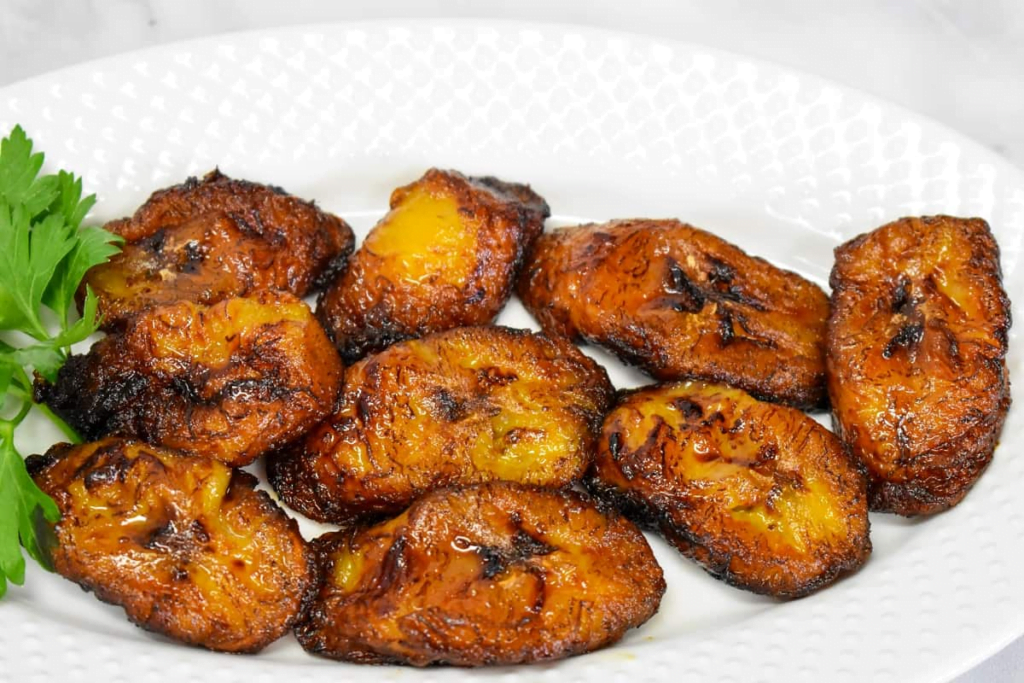
These starchy, banana-like fruits can be cooked in a variety of ways and are a common ingredient in Cuban cuisine. Fried plantains, or “tostones,” are a popular appetizer or side dish, while “maduros,” or sweet plantains, are served as a dessert or eaten with savory dishes.
They can be prepared in various ways, from sweet to savory. Here are two popular Cuban methods for preparing plantains: “Tostones” (twice-fried green plantains) and “Maduros” (sweet fried ripe plantains).
Tostones (Twice-Fried Green Plantains):
Ingredients:
- 2-3 green plantains
- Vegetable oil (for frying)
- Salt to taste
- Garlic powder (optional)
Preparation Instructions:
Peeling the Plantains
- Cut off both ends of the plantain. Make a lengthwise slit through the skin without cutting into the flesh. Peel away the skin.
Cutting and Frying
- Cut the plantains into 1-inch thick slices.
- Heat the vegetable oil in a deep frying pan over medium heat. Once hot, add the plantain slices and fry until they are golden on both sides.
Flattening
- Remove the plantains from the oil and drain on paper towels. Using a tostonera (plantain press) or the bottom of a glass, flatten each plantain slice.
Second Fry
- Return the flattened plantains to the hot oil and fry again until they are crispy and golden brown on both sides.
Seasoning:
- Remove from oil, drain on paper towels, and season with salt and optional garlic powder.
Maduros (Sweet Fried Ripe Plantains)
Ingredients:
- 2-3 ripe plantains (they should be yellow with black spots)
- Vegetable oil (for frying)
Preparation Instructions:
Peeling the Plantains
- Cut off both ends of the plantain. Make a lengthwise slit through the skin without cutting into the flesh. Peel away the skin.
Cutting and Frying
- Cut the plantains into diagonal slices, about 1/2-inch thick.
- Heat the vegetable oil in a frying pan over medium heat. Once hot, add the plantain slices and fry until they are caramelized and golden brown on both sides.
Draining
- Remove the plantains from the oil and drain on paper towels.
Both Tostones and Maduros are best served hot and can be enjoyed as a side dish or snack. Tostones are crispy and savory, while Maduros are sweet and soft. Depending on your preference, you can choose either method or prepare both for a delightful contrast of flavors and textures!
Cuban Cuisine – Yucca

Another starchy root vegetable, yucca is usually boiled or fried and served as a side dish. It has a texture similar to potatoes but with a slightly nutty flavor.
Here’s a recipe for Yuca con Mojo:
Ingredients:
For the Yucca:
- 1-2 pounds yucca (cassava), peeled and cut into 2-3 inch sections
- Water (for boiling)
- Salt to taste
For the Mojo Sauce:
- 4-6 cloves garlic, minced
- 1/2 cup fresh lime juice or sour orange juice (or a combination of both)
- 1/2 cup olive oil
- 1 teaspoon salt
- 1/2 teaspoon black pepper
- Optional: a pinch of cumin
- Optional: chopped fresh cilantro or parsley for garnish
Preparation Instructions:
Preparing the Yucca
- Thoroughly wash the yucca pieces. Using a sharp knife, remove the thick fibrous core from the center of each yucca piece.
- Place the yucca pieces in a large pot and cover with water. Add a pinch of salt.
- Bring the water to a boil, then reduce the heat to medium-low and let the yucca simmer until it becomes tender, which can take 30-45 minutes. The yucca should be easily pierced with a fork when done.
- Once cooked, drain the yucca and set aside.
Making the Mojo Sauce
- In a mortar and pestle, mash the minced garlic with the salt to create a paste.
- In a saucepan, heat the olive oil over medium heat. Add the garlic paste and sauté for about 1-2 minutes, or until fragrant. Be careful not to burn the garlic.
- Reduce the heat to low and carefully add the lime or sour orange juice to the saucepan. Season with black pepper and optional cumin. Allow the sauce to simmer for about 5 minutes, stirring occasionally.
Serving
- Pour the warm mojo sauce over the boiled yucca. Toss gently to ensure the yucca is well-coated with the sauce.
- Garnish with chopped cilantro or parsley if desired.
Yuca con Mojo is best served warm and can be enjoyed as a side dish with roasted or grilled meats. The tangy and garlicky mojo sauce complements the mild flavor of the yucca, making it a flavorful and satisfying dish.
Note: Yucca can be found in most Latin or Caribbean markets. If using sour oranges (also known as “naranja agria”), they can also be found in these markets, but if unavailable, a combination of lime and regular orange juice can be used as a substitute.
Cuban Cuisine – Sofrito
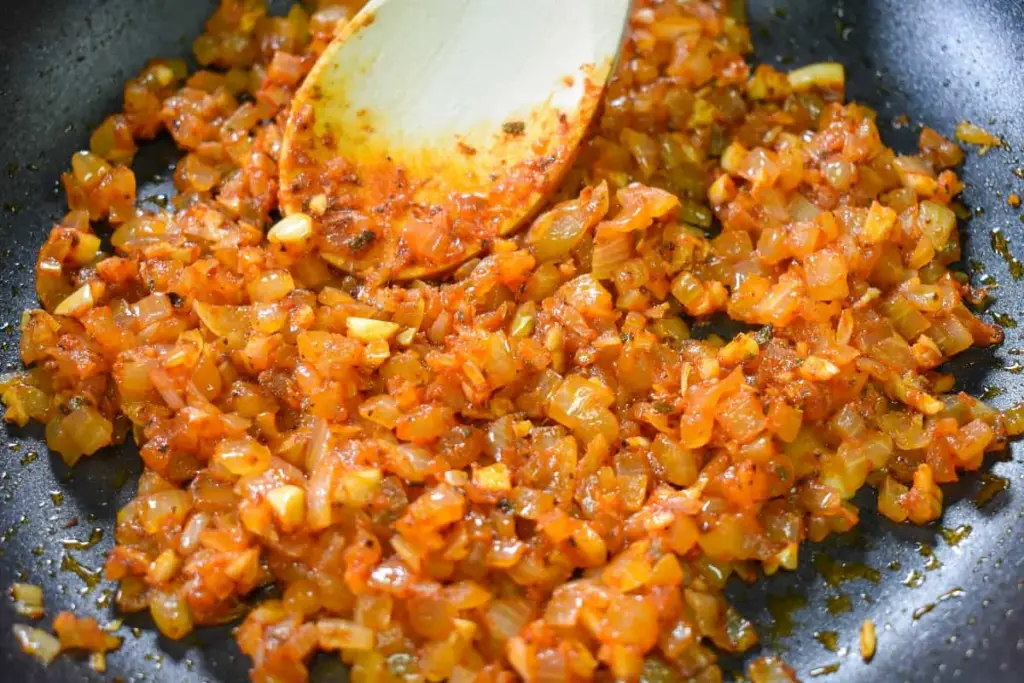
This aromatic seasoning blend is the foundation for many Cuban dishes, including stews, rice dishes, and soups. It typically consists of onions, garlic, peppers, tomatoes, and spices like cumin and oregano.
Sofrito is a flavorful base used in many Latin American dishes, including Cuban cuisine. It’s a blend of aromatic ingredients that have been finely chopped and sautéed. In Cuban cooking, sofrito is often used as a base for beans, stews, rice, and other dishes. Here’s a basic recipe for Cuban-style Sofrito:
Ingredients:
- 1 large Spanish onion, finely chopped
- 1 green bell pepper, cored, seeded, and finely chopped
- 1 red bell pepper, cored, seeded, and finely chopped (optional for added color)
- 6-8 cloves garlic, minced
- 2 ripe tomatoes, diced (or 1/2 cup canned diced tomatoes)
- 1/2 cup cilantro or culantro, finely chopped (optional)
- 1/2 cup olive oil or vegetable oil
- Salt and pepper to taste
Preparation Instructions:
Sautéing the Vegetables
- In a large skillet or saucepan, heat the olive oil or vegetable oil over medium heat.
- Add the finely chopped onion and bell peppers to the skillet. Sauté until the onion is translucent and the peppers are softened, about 5-7 minutes.
- Add the minced garlic to the skillet and continue to sauté for another 2-3 minutes, ensuring the garlic doesn’t burn.
Adding the Tomatoes
- Add the diced tomatoes to the skillet. If using fresh tomatoes, cook until they break down and release their juices. If using canned tomatoes, cook for an additional 5 minutes to blend the flavors.
Seasoning
- Season the sofrito with salt and pepper to taste. If using cilantro or culantro, add it at this stage and stir well.
Cooling and Storing
- Remove the skillet from heat and allow the sofrito to cool.
- Once cooled, you can use the sofrito immediately, or store it in an airtight container in the refrigerator for up to a week. For longer storage, consider freezing the sofrito in ice cube trays, then transferring the cubes to a freezer bag. This way, you can easily use individual portions as needed.
Sofrito serves as a foundation for many dishes, adding depth and flavor. When preparing a dish, start by sautéing the sofrito before adding other main ingredients like beans, meat, or rice.
Note: The ingredients and proportions in sofrito can vary based on personal preferences and regional variations. Some might include additional ingredients like sweet peppers, ají dulce (sweet chili peppers), or even bacon for added flavor. Adjust the recipe to suit your taste and the specific dish you’re preparing.
The National Dish of Cuba: Ropa Vieja
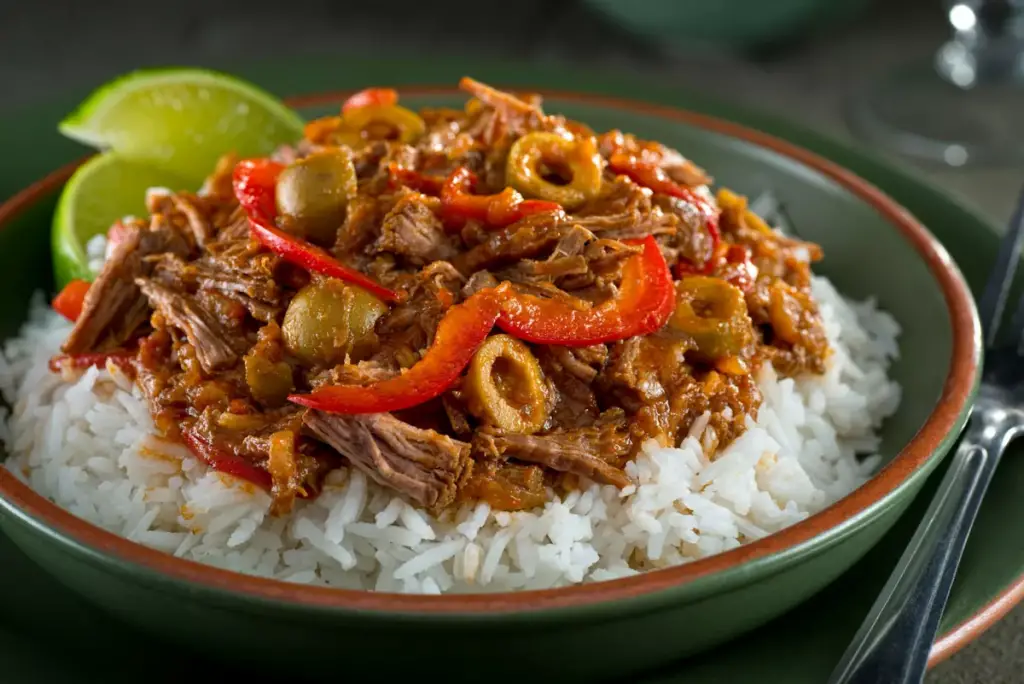
Welcome to the heart of Cuban cooking! Ropa Vieja, meaning “old clothes”, is the national dish of Cuba and a must-try for any foodie exploring the country’s cuisine. Its unique name comes from the shredded beef’s resemblance to torn rags. However, don’t let the name fool you, the dish is rich in flavor and history.
Origins of Ropa Vieja can be traced back to a Spanish legend about a man who, unable to afford food for his family, shredded and cooked his old clothes. When he prayed over the dish, the clothes transformed into a savory beef stew. The legend made its way to Cuba, and the dish became a staple of the island’s cuisine, featuring in celebrations and family meals.
To make Ropa Vieja, you need flank steak or skirt steak, which is slowly cooked with onions, peppers, garlic, and tomatoes until tender. The meat is then shredded and cooked again with the same vegetables, along with cumin, oregano, and bay leaf, giving the dish its signature flavor.
Ropa Vieja is typically served with white rice and black beans, as well as sweet plantains or yucca on the side. Almost every Cuban home has its own twist on Ropa Vieja, making it a dish with endless varieties.
Now that you know all about Ropa Vieja, you can try your hand at cooking it yourself. Impress your friends with this traditional Cuban dish and bring a little piece of Cuba to your dinner table!
“Ropa Vieja is the quintessential Cuban dish that tells the story of Cuba’s culinary heritage and cultural identity. It’s a flavorful and hearty meal that embodies the warmth and hospitality of Cuban culture.”
Here’s a traditional recipe for Ropa Vieja:
Ropa Vieja – Ingredients
- 2 lbs flank steak or brisket
- 1 large onion, thinly sliced
- 1 green bell pepper, thinly sliced
- 1 red bell pepper, thinly sliced
- 4-5 cloves garlic, minced
- 1 can (14 oz) diced tomatoes or 2-3 fresh tomatoes, diced
- 1/4 cup tomato paste
- 1/2 cup dry white wine or beef broth
- 1 teaspoon ground cumin
- 1 teaspoon dried oregano
- 1 bay leaf
- 2 tablespoons olive oil
- Salt and pepper to taste
- Optional: 1/2 cup pimiento-stuffed olives, sliced
- Optional: 1/4 cup capers, drained
- Fresh cilantro, chopped (for garnish)
Preparation Instructions:
- Cooking the Beef:
- In a large pot, add the flank steak or brisket and cover with water. Bring to a boil, then reduce the heat to low, cover, and simmer for about 1.5 to 2 hours, or until the beef is tender and can be easily shredded.
- Once cooked, remove the beef from the pot, reserve 2 cups of the beef broth, and allow the beef to cool. Once cool enough to handle, shred the beef using two forks.
- Making the Sauce:
- In a large skillet or pot, heat the olive oil over medium heat. Add the sliced onions and bell peppers, and sauté until they are softened and the onions are translucent.
- Add the minced garlic and sauté for another 1-2 minutes.
- Stir in the diced tomatoes, tomato paste, white wine or beef broth, cumin, oregano, and bay leaf. Mix well to combine.
- Combining Beef and Sauce:
- Add the shredded beef to the skillet with the sauce. Pour in the reserved beef broth and mix well.
- Season with salt and pepper to taste. If using olives and capers, add them at this stage.
- Reduce the heat to low, cover, and let the Ropa Vieja simmer for about 30 minutes, allowing the flavors to meld together.
- Serving:
- Once cooked, remove the bay leaf and discard.
- Garnish with freshly chopped cilantro.
- Ropa Vieja is traditionally served with white rice and black beans on the side. You can also accompany it with fried plantains or a simple salad.
Enjoy your authentic Cuban Ropa Vieja, a dish rich in history and flavor!
Note: The dish’s name, “old clothes,” is said to come from a legend where a man, unable to feed his family, shredded and cooked his own clothes. Miraculously, the clothes turned into a flavorful beef stew. The dish symbolizes making the most out of what you have.
Cuban Cuisine – Cuban Sandwich
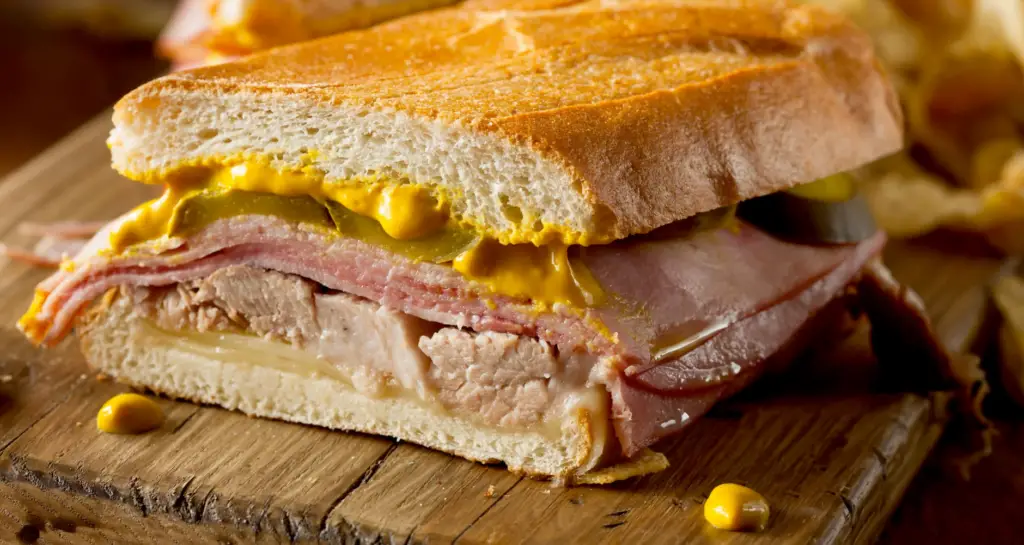
This iconic sandwich is made with ham, roasted pork, Swiss cheese, pickles, and mustard, all pressed between two slices of Cuban bread.
It’s a delicious combination of roast pork, ham, Swiss cheese, pickles, and mustard, all pressed between slices of Cuban bread. Here’s how to make a classic Cuban Sandwich:
Ingredients:
- 1 loaf Cuban bread (or substitute with French or Italian bread if Cuban bread is unavailable)
- 1/2 pound roasted pork, thinly sliced
- 1/2 pound ham, thinly sliced
- 1/4 pound Swiss cheese, thinly sliced
- Dill pickles, thinly sliced
- Yellow mustard
- Butter, softened (for spreading)
Preparation Instructions:
Prepping the Bread
- Cut the Cuban bread into sandwich-sized lengths (about 6-8 inches each). Slice each piece in half lengthwise.
Assembling the Sandwich
- Spread a thin layer of yellow mustard on the inside of both halves of the bread.
- On the bottom half, layer the ham slices, followed by the roasted pork.
- Add a layer of Swiss cheese on top of the pork.
- Place several thin slices of dill pickles on top of the cheese.
- Place the top half of the bread on the sandwich.
Pressing the Sandwich
- Heat a sandwich press or a cast-iron skillet over medium heat.
- Spread a thin layer of softened butter on the outside of both halves of the sandwich. This will give the sandwich a crispy, golden crust.
- Place the sandwich in the sandwich press or on the skillet. If using a skillet, place another heavy skillet or a brick wrapped in aluminum foil on top of the sandwich to press it down.
- Cook the sandwich for about 3-5 minutes on each side, or until the bread is crispy and golden brown, and the cheese has melted.
Serving
- Once pressed, remove the sandwich from the heat and let it sit for a minute. Then, cut it diagonally into two halves.
- Serve immediately while it’s still warm and crispy.
Enjoy your Cuban Sandwich with a side of plantain chips or a cold beverage!
Note: The Cuban Sandwich can have variations based on personal preferences and regional differences. Some might include ingredients like salami (especially in Tampa-style Cubanos) or mayonnaise. Adjust the recipe based on your taste.
Cuban Cuisine – Lechón Asado

A staple at Cuban celebrations, lechón asado is a whole roast pig typically cooked over an open flame and seasoned with garlic, onion, and sour orange juice.
The pork is typically marinated in a “mojo” mixture of sour orange juice, garlic, and various spices, then slow roasted until tender and flavorful. Here’s how to make Lechón Asado:
Ingredients:
For the Mojo Marinade:
- 8-10 garlic cloves, minced
- 1 cup sour orange juice (if unavailable, use a mix of half orange juice and half lime juice)
- 1/2 cup olive oil
- 1 teaspoon ground cumin
- 1 teaspoon dried oregano
- 1/2 teaspoon ground black pepper
- Salt to taste
For the Pork:
- 4-5 pounds pork shoulder or pork leg
- Salt to taste
Preparation Instructions:
Preparing the Mojo Marinade
- In a bowl, combine the minced garlic, sour orange juice, olive oil, cumin, oregano, black pepper, and salt. Whisk together until well combined.
Marinating the Pork
- Rinse the pork and pat it dry with paper towels. Place it in a large roasting pan or a large zip-top bag.
- Pour the mojo marinade over the pork, ensuring it’s well-coated on all sides. If using a zip-top bag, seal the bag and massage the pork to distribute the marinade evenly.
- Refrigerate and marinate the pork for at least 4 hours, preferably overnight, turning occasionally to ensure even marination.
Roasting the Pork
- Preheat your oven to 325°F (165°C).
- Remove the pork from the marinade and place it in a roasting pan. Season the pork generously with salt.
- Pour about a cup of the marinade over the pork, and reserve the rest for basting.
- Cover the pork with aluminum foil and roast in the preheated oven for about 2.5 to 3 hours, or until the internal temperature reaches at least 160°F (70°C). Baste the pork with the reserved marinade every 30 minutes.
- For the last 30 minutes of roasting, remove the aluminum foil to allow the pork to brown and develop a crispy exterior.
Resting and Serving
- Once cooked, remove the pork from the oven and let it rest for about 15 minutes.
- Slice the pork into thin slices or shred it using two forks.
- Serve the Lechón Asado with traditional Cuban sides like black beans, rice, and fried plantains.
Enjoy your Lechón Asado, a flavorful and succulent Cuban delicacy!
Note: For an authentic touch, if you have access to outdoor grilling equipment or a Caja China (a Cuban roasting box), you can roast the pork outdoors, which will impart a smoky flavor to the meat. Adjust the cooking time based on the equipment and method used.
Cuban Cuisine – Arroz con Pollo
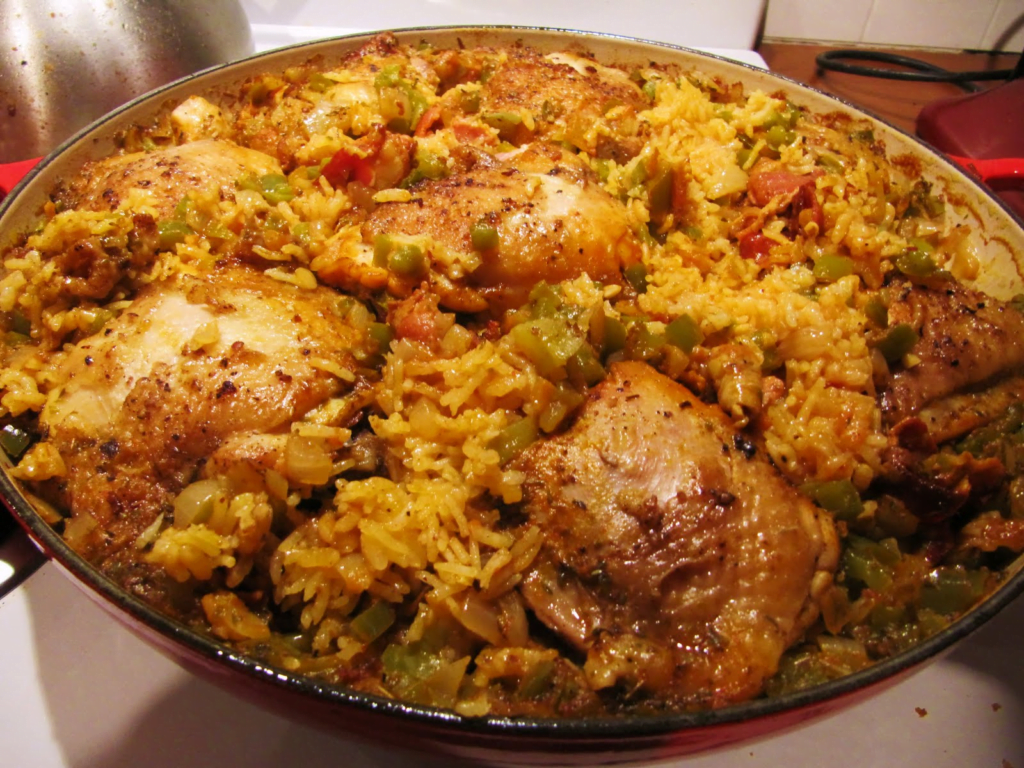
This classic Cuban dish combines tender chicken, yellow rice, and a medley of vegetables like onions, green peppers, and tomatoes.
“Arroz con Pollo” translates to “Rice with Chicken” and is a beloved dish in many Latin American countries, including Cuba. The Cuban version often features saffron or annatto for color and a unique blend of spices. Here’s a traditional recipe for Cuban Arroz con Pollo:
Ingredients:
- 2-3 pounds chicken pieces (thighs, drumsticks, and breasts)
- 2 cups long-grain white rice
- 4 cups chicken broth or water
- 1 large onion, finely chopped
- 1 bell pepper, finely chopped
- 4-5 garlic cloves, minced
- 1 cup frozen green peas
- 1 cup diced tomatoes (canned or fresh)
- 1/2 cup dry white wine
- 1/4 cup olive oil or vegetable oil
- 1 teaspoon ground cumin
- 1 teaspoon dried oregano
- 1/2 teaspoon paprika or annatto powder (for color)
- A pinch of saffron threads (optional)
- Salt and pepper to taste
- 1 bay leaf
- Optional: 1/2 cup pimiento-stuffed olives, sliced
- Optional: 1/2 cup roasted red peppers, sliced for garnish
Preparation Instructions:
Marinating the Chicken
- In a large bowl, combine the white wine, minced garlic, cumin, oregano, paprika or annatto, salt, and pepper. Mix well.
- Add the chicken pieces to the marinade, ensuring they’re well-coated. Cover and refrigerate for at least 1 hour, preferably longer.
Cooking the Chicken
- In a large pot or Dutch oven, heat the olive oil or vegetable oil over medium heat.
- Remove the chicken pieces from the marinade (reserve the marinade) and brown them in the pot on all sides. Once browned, remove the chicken and set aside.
Preparing the Rice
- In the same pot, add the chopped onion and bell pepper. Sauté until the onion is translucent.
- Add the rice to the pot and stir, allowing the rice to toast slightly and absorb the flavors.
- Pour in the reserved marinade, diced tomatoes, and chicken broth or water. Mix well.
- If using saffron, dissolve the saffron threads in a couple of tablespoons of warm water and add to the pot.
- Return the browned chicken pieces to the pot and nestle them into the rice. Add the bay leaf.
Cooking Arroz con Pollo
- Reduce the heat to low, cover the pot, and let it simmer for about 25-30 minutes, or until the rice is cooked and the chicken is tender.
- Halfway through the cooking process, check the rice and add more broth or water if needed. Adjust the seasoning as required.
Finishing Touches
- Once the rice and chicken are cooked, stir in the frozen green peas and optional olives. Cover and let it sit for an additional 5 minutes.
- Garnish with optional roasted red peppers.
Serving
- Serve the Arroz con Pollo hot, ensuring each plate gets a portion of chicken and flavorful rice.
Enjoy your Cuban Arroz con Pollo with a side salad or fried plantains for a complete meal!
Note: Arroz con Pollo is a versatile dish, and ingredients can vary based on personal preferences and regional variations. Some might include capers, chorizo, or other vegetables. Adjust the recipe based on your taste.
Cuban Cuisine – Rabo Encendido

Also known as spicy oxtail stew, this flavorful dish features braised oxtail cooked with tomatoes, red wine, and a blend of spices that give it a fiery kick.
“Rabo Encendido” translates to “Flaming Tail” in English, and it’s a spicy Cuban oxtail stew. The dish is characterized by its rich, flavorful sauce and tender pieces of oxtail. Here’s a traditional recipe for Rabo Encendido:
Ingredients:
- 2-3 pounds oxtail, cut into segments
- 1 large onion, chopped
- 1 bell pepper, chopped (green or red)
- 4-5 garlic cloves, minced
- 1 can (14 oz) diced tomatoes or 2-3 fresh tomatoes, chopped
- 1/4 cup tomato paste
- 1/2 cup dry red wine
- 2-3 cups beef broth or water
- 2 bay leaves
- 1 teaspoon ground cumin
- 1 teaspoon dried oregano
- 1/2 teaspoon paprika
- 1/4 teaspoon red pepper flakes (adjust to your heat preference)
- Salt and pepper to taste
- Olive oil or vegetable oil for frying
- Optional: 1/2 cup green olives, pitted
- Optional: 1/4 cup capers
- Fresh cilantro or parsley, chopped (for garnish)
Preparation Instructions:
Browning the Oxtail
- In a large pot or Dutch oven, heat the olive oil or vegetable oil over medium-high heat.
- Season the oxtail pieces with salt and pepper. Once the oil is hot, add the oxtail pieces and brown them on all sides. This will take about 3-4 minutes per side. Once browned, remove the oxtail and set aside.
Sautéing the Vegetables
- In the same pot, add the chopped onion and bell pepper. Sauté until the onion becomes translucent.
- Add the minced garlic and sauté for another 1-2 minutes.
Building the Stew
- Stir in the diced tomatoes, tomato paste, red wine, beef broth or water, cumin, oregano, paprika, and red pepper flakes. Mix well.
- Return the browned oxtail pieces to the pot and add the bay leaves.
- Bring the mixture to a boil, then reduce the heat to low, cover, and let it simmer for about 2.5 to 3 hours. The oxtail should become very tender and the sauce should thicken.
Adding Optional Ingredients
- If using olives and capers, add them to the pot about 30 minutes before the end of the cooking time.
Serving
- Once the oxtail is tender and the stew is rich and flavorful, adjust the seasoning with salt and pepper as needed.
- Remove the bay leaves and discard.
- Garnish with freshly chopped cilantro or parsley.
- Serve the Rabo Encendido with white rice or fried plantains.
Enjoy your Rabo Encendido, a hearty and spicy Cuban delicacy that’s sure to warm you up!
Note: The spiciness of Rabo Encendido can be adjusted based on personal preference. If you prefer a milder stew, reduce or omit the red pepper flakes. On the other hand, if you like it spicier, you can add more red pepper flakes or even a chopped hot pepper. Adjust the recipe to suit your taste.
These are just a few examples of the rich and varied culinary offerings of Cuban cuisine. Whether you’re a food lover or just curious about other cultures, exploring the flavors of Cuba is a must-do experience.
Cuban Cuisine – Tres Leches Cake

Tres Leches Cake, meaning ‘three milks cake,’ is a moist and indulgent dessert that originates from Latin America, including Cuba.
Soak the sponge cake in a mixture of three milks (evaporated milk, condensed milk, and heavy cream), which gives it a luscious and creamy texture.
Topped with whipped cream and fresh fruit, Tres Leches Cake is a true treat for the taste buds.
Here’s a traditional recipe for Tres Leches Cake:
Ingredients:
For the Cake:
- 1 cup all-purpose flour
- 1 1/2 teaspoons baking powder
- 1/4 teaspoon salt
- 5 large eggs, separated
- 1 cup granulated sugar, divided
- 1 teaspoon vanilla extract
- 1/3 cup whole milk
Three Milks Mixture:
- 1 can (12 oz) evaporated milk
- 1 can (14 oz) sweetened condensed milk
- 1/4 cup heavy cream
For the Topping:
- 1 to 1 1/2 cups heavy cream
- 3 tablespoons powdered sugar
- 1 teaspoon vanilla extract
- Optional: ground cinnamon or maraschino cherries for garnish
Preparation Instructions:
Baking the Cake
- Preheat your oven to 350°F (175°C). Grease and flour a 9×13-inch baking dish.
- In a bowl, whisk together the flour, baking powder, and salt. Set aside.
- In a large bowl, beat the egg yolks with 3/4 cup of sugar until the yolks turn pale yellow. Stir in the milk and vanilla extract.
- Fold in the flour mixture until just combined.
- In a separate bowl, beat the egg whites until soft peaks form. Gradually add the remaining 1/4 cup of sugar and continue beating until the egg whites are glossy and firm.
- Gently fold the egg whites into the yolk mixture. Pour the batter into the prepared baking dish.
- Bake for 25-30 minutes, or until a toothpick inserted into the center comes out clean. Allow the cake to cool.
Preparing the Three Milks Mixture
- In a pitcher or large bowl, combine the evaporated milk, sweetened condensed milk, and heavy cream. Stir well.
- Once the cake has cooled, use a fork to poke holes all over the surface of the cake.
- Slowly pour the milk mixture over the cake, ensuring it’s evenly soaked. Allow the cake to absorb the milk mixture for about 30 minutes.
Preparing the Topping
- In a bowl, whip the heavy cream, powdered sugar, and vanilla extract until stiff peaks form.
- Spread the whipped cream over the soaked cake.
Serving
- Garnish the Tres Leches Cake with a sprinkle of ground cinnamon or maraschino cherries, if desired.
- Slice and serve chilled. Store any leftovers in the refrigerator.
Enjoy your Tres Leches Cake, a creamy and delightful Cuban dessert that’s perfect for any occasion!
Note: Tres Leches Cake is best when allowed to soak and chill for several hours or overnight. This allows the flavors to meld and the cake to fully absorb the milk mixture. Adjust the sweetness based on your preference by adding more or less sugar to the whipped cream topping.
Conclusion
Exploring the culinary heritage of Cuba has been a delightful journey, full of flavors and traditions that define the country’s identity. From the Afro-Caribbean and Spanish influences to the impact of colonization and cultural exchange, Cuban cuisine is a reflection of its complex history.
At the heart of Cuban food culture are the traditional ingredients and flavors that give Cuban cuisine its unique taste. Whether it’s rice, beans, plantains, yucca, or the vibrant spices and seasonings used in Cuban cooking, there’s no denying that Cuban cuisine is a feast for the senses.
FAQ’s
What is the national dish of Cuba?
The national dish of Cuba is Ropa Vieja, a flavorful and tender shredded beef dish.
What are some famous Cuban dishes?
Some famous Cuban dishes include the Cuban sandwich, lechón asado (roast pig), and arroz con pollo (chicken with rice).
What are the key ingredients in traditional Cuban cuisine?
Key ingredients in traditional Cuban cuisine include rice, beans, plantains, yucca, and a variety of vibrant spices and seasonings.
How can I make Ropa Vieja at home?
To make Ropa Vieja at home, you will need to slow-cook beef with onions, bell peppers, tomatoes, and flavorful spices until it becomes tender and can be easily shredded. The dish is typically served with rice and beans.
What other iconic Cuban dishes should I try?
In addition to Ropa Vieja, other iconic Cuban dishes worth trying include the Cuban sandwich, lechón asado, and arroz con pollo. These dishes showcase the delicious flavors and diversity of Cuban cuisine.
Why is Cuban cuisine significant?
Cuban cuisine is significant because it reflects the diverse cultural influences that have shaped the country’s history. From African and Spanish flavors to indigenous ingredients, Cuban food culture is a vibrant celebration of the nation’s identity and heritage.

